May 29 - June 4, 2016: Issue 265
Ships Biscuits - The At Sea Necessity That Floated William Arnott’s Success
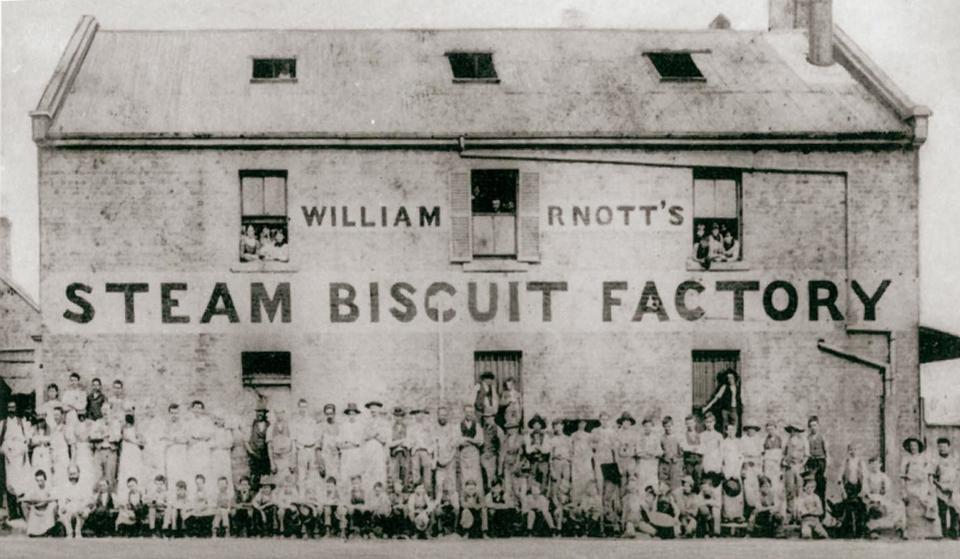
When you look at the familiar bright Rosella-like bird eating a biscuit as the trademark of Arnott’s biscuits, have you ever wondered what kind of biscuit the bird is eating – or where the inspiration for this as a logo came from?
The biscuit the Australian Rosella is eating could originally have been a Hardtack or Ships Biscuit, since changed to the popular SAO biscuit, while another in the Arnott’s range, now called the ‘Water Cracker’ is an equally once important version of the Captain’s Table Biscuit, a made from more refined flour version of the hardtack or ship’s biscuit.
The Arnott's parrot is stated to stem from 1888 and was registered as a logo (trademarked in 1907). The parrot came from Miss Leslie Arnott (William's daughter-in-law). Miss Arnott drew a sketch of a Mexican parrot given to William by the Captain of a Newcastle Coal fleet, in the sketch, the bird sat on a pole and ate a biscuit. It looks like one of the Macaws of South America. – per Arnott’s website – Historical Timeline
What is or was a Hardtack or ‘ship’s biscuit’?
The Hardtack, or hard tack, is a simple type of biscuit or cracker, made from flour, water, and sometimes salt. Inexpensive and long-lasting, it was and is used for sustenance in the absence of perishable foods, commonly during long sea voyages, land migrations, and military campaigns. The name derives from the British sailor slang for food, "tack". It is known by other names such as brewis (possibly a cognate with "brose"), cabin bread, pilot bread, sea biscuit, sea bread (as rations for sailors), ship's biscuit, or ship biscuit, or pejoratively as "dog biscuits", "molar breakers", "sheet iron", "tooth dullers", or "worm castles". Australian and New Zealand military personnel knew them with some sarcasm as ANZAC wafers (not to be confused with Anzac biscuit).
The introduction of the baking of processed cereals, including the creation of flour, provided a more reliable source of food. Egyptian sailors carried a flat brittle loaf of millet bread called dhourra cake, while the Romans had a biscuit called bucellatum. King Richard I of England left for the Third Crusade (1189–92) with "biskit of muslin", which was a mixed grain compound of barley, bean flour, and rye.
Some early physicians associated most medical problems with digestion. Hence, for sustenance and health, eating a biscuit daily was considered good for one's constitution. The bakers of the time made biscuits as hard as possible, as the biscuits would soften and become more palatable with time due to exposure to humidity and other weather elements. Because it is so hard and dry, hardtack (when properly stored and transported) will survive rough handling and temperature extremes. The more refined captain's biscuit was made with finer flour.
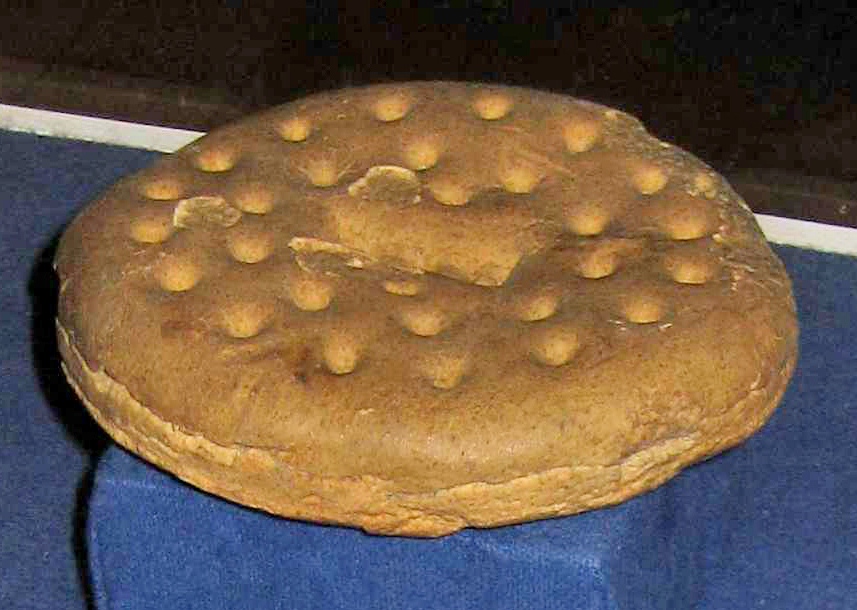
A ship's biscuit—purportedly (circa 1852) the oldest in the world—displayed at the maritime museum in Kronborg, Denmark.
To soften, hard tack was often dunked in brine, coffee, or some other liquid, or cooked into a skillet meal. Baked hard, it would stay intact for years if kept dry. For long voyages, hardtack was baked four times, rather than the more common two, and prepared six months before sailing.
In 1588, the daily allowance on board a Royal Navy ship was one pound of biscuits plus one gallon of beer. Later, Samuel Pepys in 1667 first regularized naval victualing with varied and nutritious rations. Royal Navy hardtack during Queen Victoria's reign was made by machine at the Royal Clarence Victualing Yard at Gosport, Hampshire, stamped with the Queen's mark and the number of the oven in which it was baked. Biscuits remained an important part of the Royal Navy sailor’s diet until the introduction of canned foods; canned meat was first marketed in 1814, and preserved beef in tins was officially introduced to the Royal Navy rations in 1847. - [1.]
Why may the Arnott family have celebrated a version of a ship’s biscuit in their logo?
Simple answer: this was the product that allowed them to launch a small empire that for decades was the largest biscuit producer in Australia - a dream that began a fair while ago and a long way away.
One story from a man in port in Newcastle once these ship's or hardtack biscuits, became big sellers, illustrates how they were used when ships spent months at sea (please note the two varying spellings of the name of this ship:
SHADES OF THE PAST - MELBOURNE AND NEWCASTLE
By R. J. Pilger
The “Marechal Suget” , was loaded with general cargo, which included a wire cable sevenmiles long, all in one piece, this was intended for the Melbourne cable bars. We left Liverpool on the 18th of August and had an uneventful trip, by which I mean we had our usual quota of sunshine and rains, calms and gales, among them some useful winds, such as the trade-winds and the ‘roaring forties’, which brought us to Melbourne in 85 days, about 10 days before the Melbourne Cup, which however did not interest us, not being financial twenty-four hours after the usual five shillings done on Saturday night. And that was the only trip done buy the “Marechal Suget” (named after one of Napoleon’s generals) ever accomplished during this voyage. Captain Reade believed in letting a ship sail on as even a keel as possible and besides his wife was aboard. ….
A fortnight before Christmas we left for Newcastle, N.S.W., with part of the Liverpool cargo. …
Newcastle in those days was a port still infested with sailors crimps and boarding-house runners, whose object it was to persuade men to “better themselves” by leaving four months pay behind at three pounds per month and ship in another vessel (no choice was given) at three pounds ten and collecting the advance note. So we lost most of our crew.
Among the ships in port at the end of 1896 were “Buckhurst” bound for Panama with Duckensfield coal, which caught fire 1000 miles from the latter port and the crew in boats rowing to Punta Arenas, Costa Rica. Also the “Swanhilda” which left a few weeks before we arrived in Newcastle for San Francisco with Butler, the Blue Mountain murderer aboard. He shipped in Newcastle with Captain Lee Weller’s, his victim, discharges. It was very easy in those days, with the help of crimps, to get away form Australia.
We were lying alongside Queen’s Wharf, opposite Customs House and a pleasing feature of the port was the number of visitors from suburbs and the country inspecting the ships along the wharf…on Sundays and holidays and among those sightseers I met my fate..
We were married six weeks later and after a weeks honeymoon I rejoined the ship…
I had seen the captain two days before who asked me whether I intended to bend the sails. I promised I would go aboard next day.
Two days later, on the 18th February, 1897, my young wife watched us passing the Nobbys with the top-sails set, bound for Acapulco, Mexico, from the bridge of Honeysuck station with binoculars lent to her by the stationmaster, after which she returned to her home near Cessnock, then a miserable Village, now one of the largest towns in New South Wales, standing on one of the most productive coalfields in the world....
That completed the bill of fare for breakfast, with exception of the hard-tack, Liverpool pantiles outward bound and Arnott's ships biscuit from Newcastle...
Those who liked biscuits in their soup pounded them up in a small canvas bag - others well endowed by nature with strong teeth chewed them and holding the end over the plate allowed them to drop in from the ''mill'. …
At quarter to four the call comes again and from four to six, the first dog-watch, the men on deck finish the work while the others go below, getting their tea at half past five and' relieve the others at six, who in their turn line up at the 'cook-house door' with their hook-pots for their tea, or what goes by the name of tea, being a decoction in the nature of a ninth life -of an inferior restaurant brand of that herb.
Those who had meat left from dinner eat what the cockroaches had left, others who had -been busy with the canvas bag and mallet made a 'feed' out of broken biscuits and water, giving it to the cook to bake, the mess being called crackerhash, if one is well in with the 'doctor' he may even put a few currants in the hash, when it becomes 'spotted dog'.…
The- 'Marechal Cuchet’ made a long passage of the 7700 miles from Newcastle to Acapulco but after 88 days we dropped anchor in that port, one of the few cafe harbours on the coast of the American continent, south of California.' To be Continued. SHADES OF THE PAST (1937, October 26). The Cessnock Eagle and South Maitland Recorder (NSW : 1913 - 1954), , p. 4. Retrieved from http://nla.gov.au/nla.news-article99462239
Louis-Gabriel Suchet, Duc d'Albuféra (2 March 1770 – 3 January 1826) was a Marshal of France and one of Napoleon's most brilliant generals. - More under 'Extras'
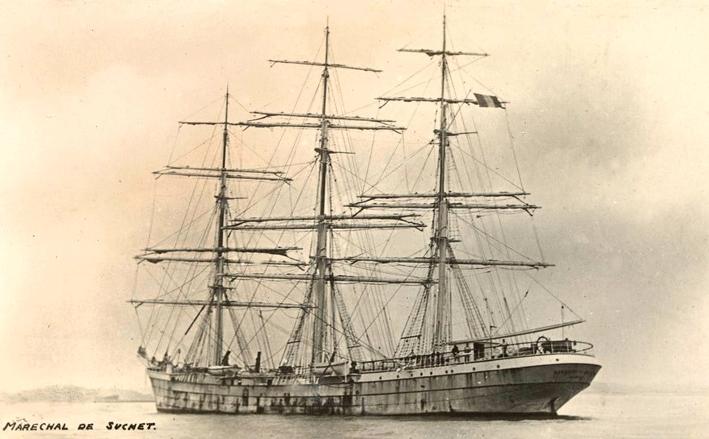
The Marechal Suchet was launched on the 28th of November, 1893, described as a three masted sailing ship with some steel; length 267 feet, breadth 40.1 feet, depth 23.6 feet. She was built for A. Ruffer & Sons of London by Archibald McMillan & Son of Dumbarton in Scotland - also the land of William Arnott's birth.
William Arnott was born 6 December 1827, in Pathhead, Scotland, the eldest of eight children. His father was David 'Millie' Arnott and his mother was Isobella Arnott.
In October 1847, after completing an apprenticeship as a Baker and Confectioner, he and his brother David set out for Sydney, Australia on board the ship Sir Edward Parry; arriving on 17 February 1848. The brothers stayed for a while at Hunter Valley, where the rest of their family had settled, having a business there at Maitland when Muswellbrook was still called 'Muscle Brook'!.
After a short stint at gold mining between 1851 and 1853, fairly unsuccessful apart from the popularity of his pies and breads on the fields, William Arnott returned to his baking and confectionery business:
FOR SALE, a BAY MARE, five years old, broke into saddle and harness, warranted quiet and sound, in good condition. Apply to WILLIAM ARNOTT, Baker and Confectioner, 233 High-street, West Maitland. Classified Advertising (1855, January 10).The Maitland Mercury and Hunter River General Advertiser (NSW : 1843 - 1893), , p. 3. Retrieved from http://nla.gov.au/nla.news-article696822
WANTED, a Confectioner, that can work in the Bakery house, and boil sugar. Apply to Mr. WILLIAM ARNOTT. West Maitland. Advertising. (1856, January 21). Empire (Sydney, NSW : 1850 - 1875), p. 1. Retrieved from http://nla.gov.au/nla.news-article60172702
The two great floods of the Hunter River in June and then August 1857 brought disaster, flooding the building he had constructed in 1856 and again in 1861. Despite his good being popular, so much so he needed to hire help, Mr. Arnott was working solely to meet debts.
WANTED, a Baker; one accustomed to the small goods preferred. Apply to Mr. WM. ARNOTT, Baker, West Maitland. N.B.-To a steady man, constant work and good wages. Advertising (1857, November 30). Empire (Sydney, NSW : 1850 - 1875), , p. 4. Retrieved from http://nla.gov.au/nla.news-article60262161
In 1862 his creditors and in 1864 there were more floods.
In February 1865 one of his creditors, a Mr. Mitchell demanded full payment of a £132 promissory note. On April 29th Arnott for bread is listed under theaccounts of Maitland Hospital (£ 36, 10 s 5).
It is this Notice in March 1865 that signals a shift for Mr. William Arnott:
NOTICE. THE undersigned begs to return his SINCERE THANKS to his numerous customers for their patronage during the last twelve years; and, at the same time, to intimate that he has DISPOSED of his business to Mr. WILLIAM HORSELY, on whose behalf he respectfully solicits a continuance of the favors hitherto accorded to himself. WILLIAM ARNOTT, Baker. West Maitland, 27th March, 1865.
With reference to the above notice, the undersigned hereby notifies that he now CARRIES ON the BUSINESS hitherto conducted by Mr. WILLIAM ARNOTT, and trusts that by strict attention to the interest of his customers, to merit a continuance of that patronage so liberally bestowed upon his predecessor. WILLIAM HORSLY, Baker. 27th March, 1865. Advertising (1865, March 28). The Maitland Mercury and Hunter River General Advertiser (NSW : 1843 - 1893), , p. 1. Retrieved from http://nla.gov.au/nla.news-article18705241
In April his wife Monica, née Sinclair, whom he had met her on the voyage to Sydney and married in 1850, passed away.
FUNERAL. THE friends of Mr William Arnott are respectfully invited to attend the FUNERAL of his late WIFE, to move from his residence, William-street, East Maitland, This Day (Thursday), at Two o'clock. WM. SLOAN & SON, Undertakers. Advertising (1865, April 13). The Maitland Mercury and Hunter River General Advertiser (NSW : 1843 - 1893), , p. 1. Retrieved from http://nla.gov.au/nla.news-article18698696
The Arnott's had two sons and two daughters - the eldest, Lesley, being around 8 years old in 1865 - an incident reporting him needing stitches after falling off his cart in January 1865 is under 'Extras'.
In September he moved to Newcastle to begin a new business, marrying again in October at Morpeth, this time to Margaret Maclean, née Fleming, a lady with whom he would have another five sons and three daughters that would survive him.
By the end of the year Mr. Arnott had moved to Newcastle and commenced making biscuits:
Notice. To Storekeepers and Others - The Undersigned, having commenced BISCUIT MANUFACTURING, has FOR SALE, Pic Nic, Yorks, Cabin, and all kinds of Biscuits, of the best quality, at Sydney prices. WILLIAM ARNOTT, Hunter-street, Newcastle. Advertising (1865, November 22). The Newcastle Chronicle and Hunter River District News (NSW : 1859 - 1866), , p. 1. Retrieved from http://nla.gov.au/nla.news-article128921162
This small shop quickly outgrew its single room, taking over the whole building.
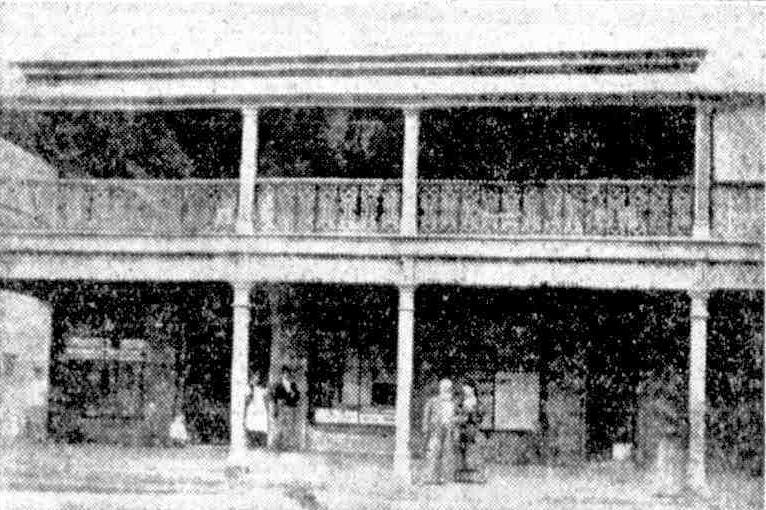
WILLIAM ARNOTT'S BUSINESS PREMISES, 1867. HALF A CENTURY OF PROGRESS. (1920, December 19). Sunday Times (Sydney, NSW : 1895 - 1930), , p. 6 (Sunday Times Christmas Magazine.). Retrieved from http://nla.gov.au/nla.news-article120522780
Soon afterwards this was outgrown and he established the William Arnott's Steam Biscuit Factory in Newcastle, New South Wales. It was so named as his biscuit-making machines (or "rotary ovens") were steam-powered and he employed quite revolutionary ideas - many of them a first for their era - among many firsts to be seen and tasted or known through Arnott's Biscuits:
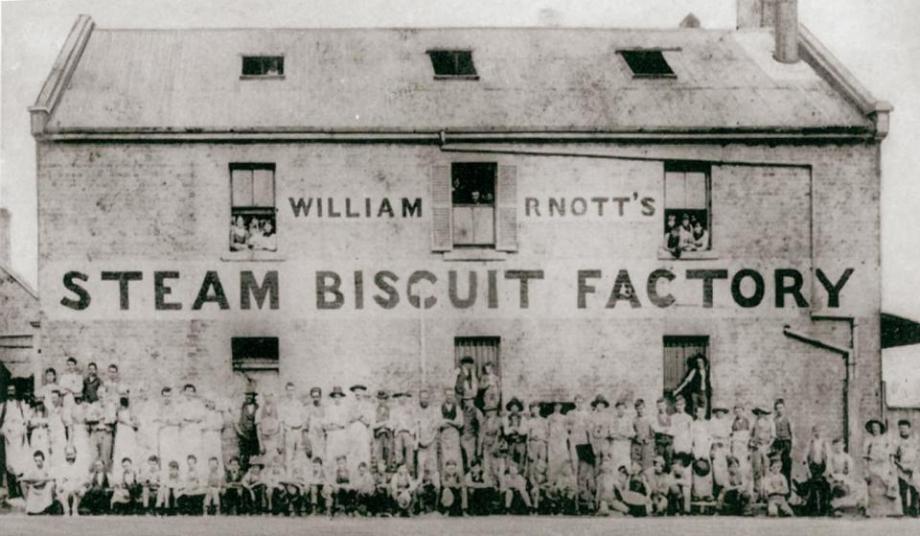
Arnotts Beautiful Babies - Milk Arrowroot - for Health during Difficult Times
A Campaign similar to that of crushing ship's biscuits and adding them to water (or milk in this case) rose in the still very popular Milk Arrowroot biscuits, one of the foundation products of Arnott's Biscuits.
Marketed as a substitute for mother's milk, and certainly valuable for mother's who could not get babies to gain weight or had no access to a cow or milk if they could not feed the child themselves, this 'Arnott's baby' focus began 25 years after the Milk Arrowroot biscuit first were made and ran in one form or another to meet eras of lack in Australia. Many would see in this William Arnott's ethos extended - articles listing the giving away of money, hundreds of loaves of bread and tons of biscuits to those who were poor mark every chapter of the gentleman's and his family's lives. This is carried forward by the Arnott's company of today in The Arnott's Foundation of today, where the focus is still on children's needs and what is now called Food Banks.
First appearing in the 1890 to 1900's, when Australia was experiencing a Depression commencing in 1891 with 'The Great Crash', which some historians cite as worse than that experienced 30 years later, the idea resurfaced in the Depression years of the 1930's, when photographic contests were run.
WILLIAM ARNOTT, NEWCASTLE.
Mr Arnott does not keep a shop, but many hundreds of shops keep Mr Arnott’s biscuits. Aided by the business ability of his son, Mr Leslie Arnott, he has built up a business of great dimensions, and a visit to the Newcastle factory is an interesting trip There one gathers some idea of the enormous output of plain and fancy biscuits and cakes. Every ingredient used is of sterling quality, for Mr Arnott's motto is "The best pays best ". Such quantities of eggs, butter, and sugar are used at the biscuit factory that Mr Arnott must be one of the largest purchasers in these lines in the colony -he is probably the largest. Just now there is naturally an extra heavy demand for Mr Arnott s Christmas cakes and it is no wonder, for they are of a quality that the cleverest little housewife could not attempt to rival. Everyone knows the pictures of wonderful fat boys and girls "fed on Arnott's biscuits." He will no doubt be the cause this Christmas time of increasing the girth of many another youthful waistband. WILLIAM ARNOTT, NEWCASTLE. (1899, December 20). The Sydney Morning Herald (NSW : 1842 - 1954), , p. 4. Retrieved from http://nla.gov.au/nla.news-article14239666
The first time round for 'Arnott's Babies' it was more sketches than photos.
It is here we see a Pittwater connection and glimmer what one of the children of an early family may have looked like through this sketch. It is good to remember that Pittwater was still considered a 'country' place during this time, with many farms that would have been self-sufficient and with ample food for little ones. This advertorial ran in all country newspapers:
ARNOTTS LIVING PICTURES. TESTIMONIAL.
Bay View, Pittwater, 30th August, 1900
Mr. ARNOTT, Newcastle. Dear Sir, I have very much pleasure in forwarding you the photo of my girl, age when photographed 6 ½ months, and weighed 291b. A picture of health and beauty, and a child that everyone sees and admires. I have been advised to send in her portrait, which I am proud to do, for I am sure you deserve just as much credit for such a child, being fed on your Milk Arrowroot Biscuits, which must contain great nourishment. At a month old she began with your biscuits, and is eating them up to the present time, and just as fat as ever. I can sincerely say your Milk Arrowroot Biscuits have given my wife and self perfect satisfaction. Trusting you will let me know if the photo has been received, and oblige yours, truly. CHARLES BUIST.
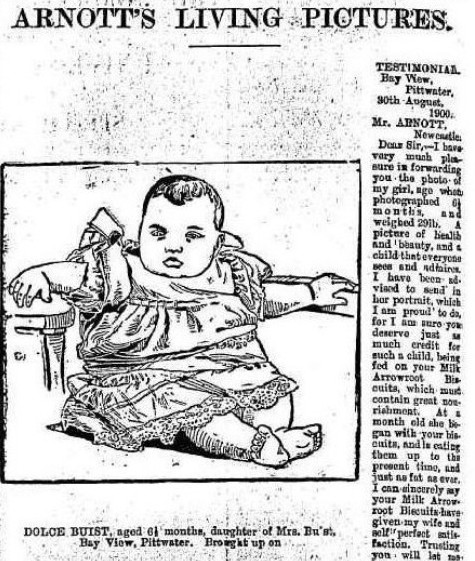
DOLCE BUIST, aged 6 ½ months, daughter of Mrs. Buist, Bay View, Pittwater.
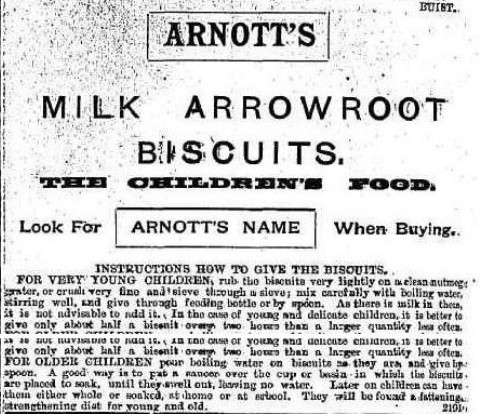
Advertising. (1901, January 29). Newcastle Morning Herald and Miners' Advocate (NSW : 1876 - 1954) , p. 6. Retrieved fromhttp://nla.gov.au/nla.news-article138470135
These sketches were changed, in the case of the 'thank you for bothering' Sydney Mail, a periodical that was the first to go to the expense and advances required in publishing wonderful photographs in newspapers, most of them still of high quality today. Sydney Mail editions allow us to accurately find what people, yachts and buildings looked like. They ran one cherub who clearly likes his food:
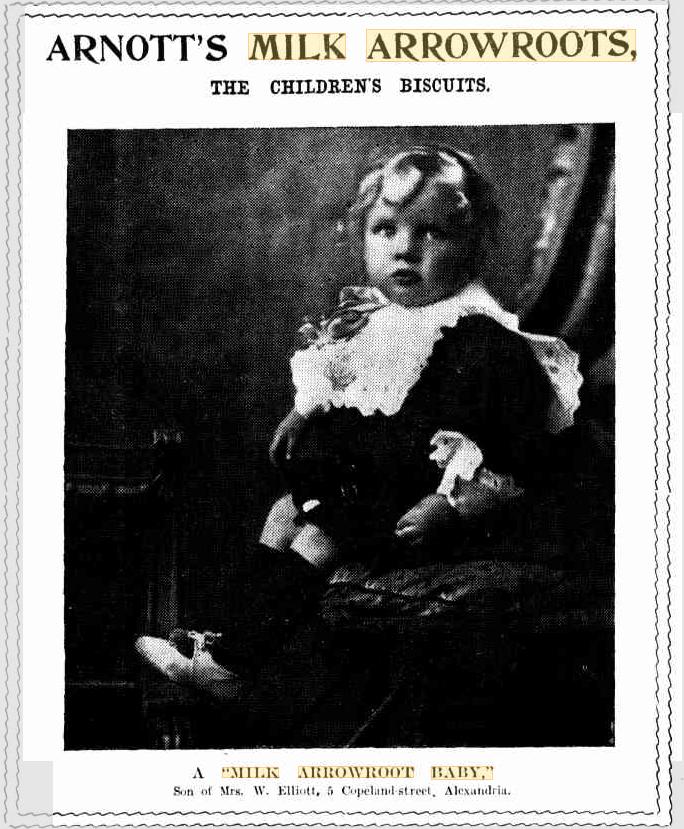
ARNOTT'S MILK ARROWROOTS, THE CHILDREN'S BISCUITS. (1904, October 12). The Sydney Mail and New South Wales Advertiser (NSW : 1871 - 1912), , p. 920. Retrieved from http://nla.gov.au/nla.news-article164910656
Whole page of testimonies - stating they have received over 7000 tributes (were this many babies around in 1906?) also contains an Analysis of the product.
You can be certain that Arnott's, who still label their products with 'No Artificial colours, flavours or preservatives' in the biscuits we get; the Shredded Wheatmeal, original Granita, would not recommend bringing up baby on milk and crushed biscuits alone today - this idea needs to be viewed in context of the times it was associated with, when people were starving, including new mothers, and babies getting sick due to a lack of nutritional foods.
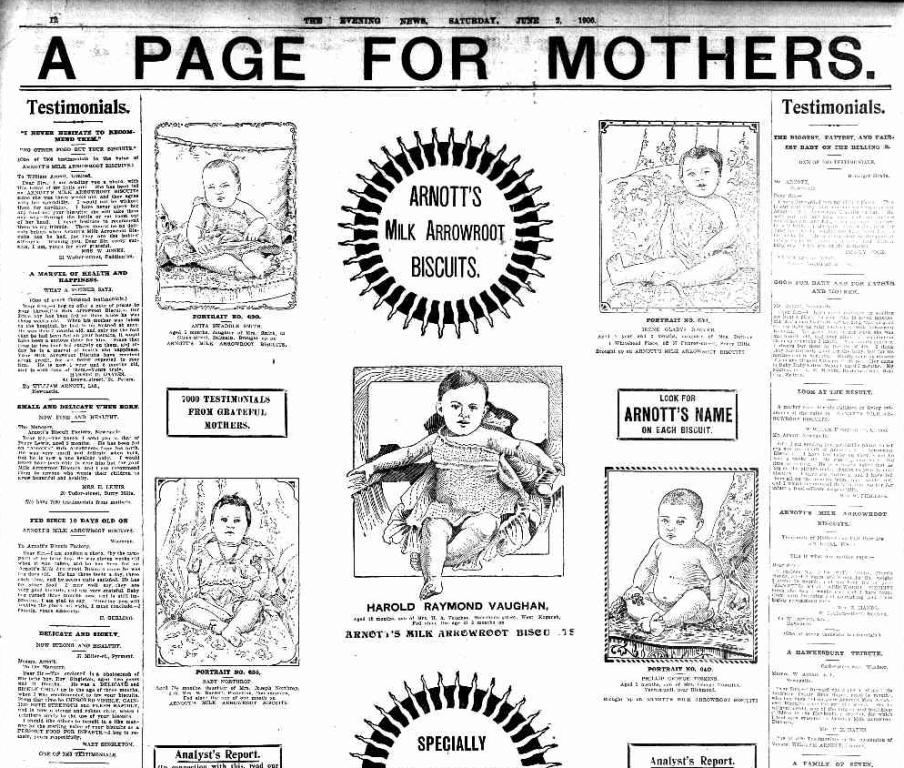
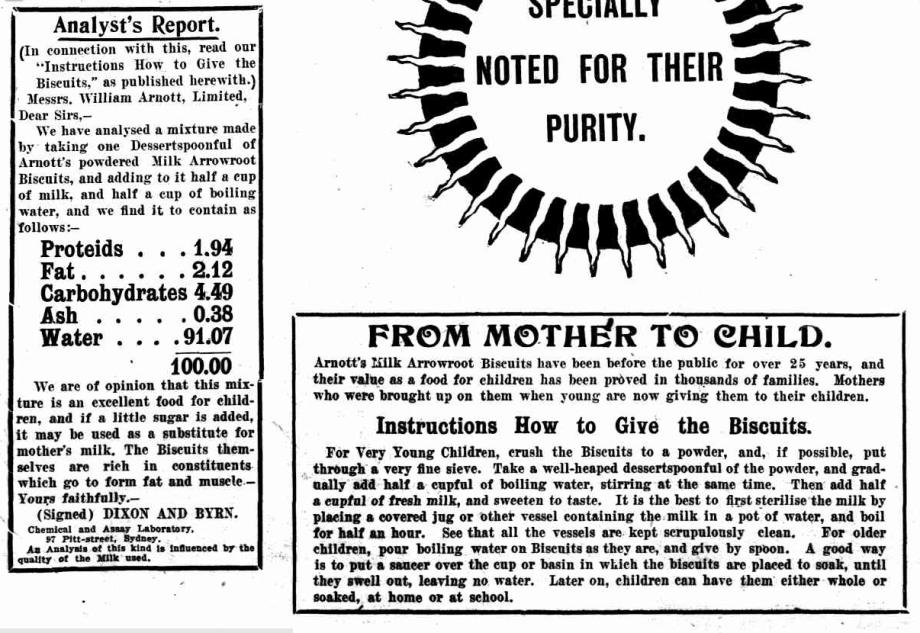
From - FED SINCE 10 DAYS OLD ON (1906, June 2). Evening News (Sydney, NSW : 1869 - 1931), , p. 12. Retrieved from http://nla.gov.au/nla.news-article114325160
Arrowroot is a starch obtained from the rhizomes (rootstock) of several tropical plants, traditionally Maranta arundinacea, but also Florida arrowroot from Zamia integrifolia, and tapioca from cassava (Manihot esculenta), which is often labelled as arrowroot. Japanese arrowroot, Pueraria lobata, also called kuzu, is used in similar ways.
Archaeological studies in the Americas show evidence of arrowroot cultivation as early as 7,000 years ago. The name may come from aru-aru (meal of meals) in the language of the Caribbean Arawak people, for whom the plant was a staple. It has also been suggested that the name comes from arrowroot's use in treating poison-arrow wounds, as it draws out the poison when applied to the site of the injury.
In the early days of carbonless copy paper, arrowroot, because of its fine grain size, was a widely used ingredient. After an economical way of centrifugally separating wheat flour was devised, arrowroot lost its role in papermaking.
Arrowroot was very popular in the Victorian era, and Napoleon supposedly said the reason for the British love of arrowroot was to support the commerce of their colonies. It can be consumed in the form of biscuits, puddings, jellies, cakes, hot sauces, and also with beef tea, milk or veal broth. Kudzu arrowroot (Pueraria lobata) is used in noodles in Korean and Vietnamese cuisine. In the Victorian era it was used, boiled with a little flavouring added, as an easily digestible food for children and people with dietary restrictions. With today's greater understanding of its limited nutritional properties, it is no longer used in this way.
The lack of gluten in arrowroot flour makes it useful as a replacement for wheat flour in some baking uses. Like other pure starches, however, arrowroot is almost pure carbohydrates and devoid of protein, thus it does not provide a complete substitute for wheat flour for bread-making, which requires gluten.
Arrowroot makes clear, shimmering fruit gels and prevents ice crystals from forming in homemade ice cream. It can also be used as a thickener for acidic foods, such as Asian sweet and sour sauce. It is used in cooking to produce a clear, thickened sauce, such as a fruit sauce. It will not make the sauce go cloudy, like cornstarch, flour, or other starchy thickening agents would. Arrowroot. (2016, January 12). In Wikipedia, The Free Encyclopedia.Retrieved from https://en.wikipedia.org/w/index.php?title=Arrowroot&oldid=699508793
Arnott's Milk Arrowroot biscuits: historical flagship biscuit brand of Arnott's, made with Arrowroot flour, commonly given to babies to introduce them to solid food. (Wheat Flour, Sugar, Vegetable Oil (Contains: Soy), Condensed Milk, Salt, Baking Powder, Arrowroot Flour.)
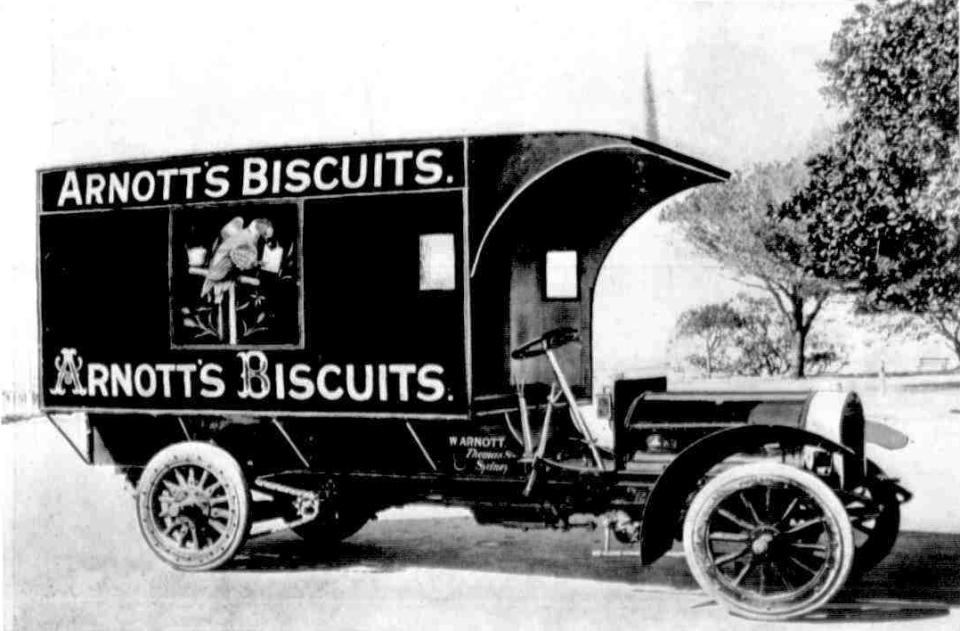
1906 also brought 'news' of another innovation through Arnott's:
The First of the Motor-Waggons.
A great feature of London life nowadays is the vast number of motor-waggons that are doing the carrying business of the city, and have Almost expelled, the draught horse from London streets. Though Sydney has nothing like that as yet, a start has been made by tho firm of William Arnott, Limited, who have Imported a motor-waggon for delivering their biscuits. The waggon, of which we give an illustration, is a "Swiftsure" of 22-horse power, fitted with a four-cylinder Aster engine, with magneto and accumulator ignition, the two systems being entirely separate. It is fitted with heavy, solid tyres, and a chain drive. The chassis, i.e., the frame of the waggon, was Imported but the body was made locally by Mr. C. J. Pittman, Redfern. Though the waggon is not intended to run at high speeds, it is said to be capable of running up to twenty miles an hour. Other firms with large deliveries to make will watch this experiment with interest. The First of the Motor-Waggons. (1906, August 29). Australian Town and Country Journal (Sydney, NSW : 1870 - 1907), , p. 35. Retrieved from http://nla.gov.au/nla.news-article71540287
This was clearly not a full roll out of the Arnott's crimson motorised wagon to become so popular during the 1930's as a few years later new stables, for horse and buggy deliveries, were raised:
ARNOTTS BISCUIT FACTORY.
Brick, stable and waggon buildings of an extensive nature have just been completed at the biscuit factory Homebush, for Messrs William Arnott Ltd, from plans and specifications and under the supervision of Mr S N Rickard, architect In the main stable buildings are arranged 40 stalls, in rows of 20 on either side of the building, including two loose boxes There are also two isolation boxes for sick horses, fitted up with a girder over the centre of each for swinging horses and a swinging bin In each The floor of each of the stalls and loose boxes Is constructed with concrete troughs, with a fall outwards, and covered over with oregon slabs, each of those troughs drains Into a line of sewerage pipes, and connected to the sewer the main stable building has a clear spin of 41ft with large girders over the centre portion to carry a loft 50ft by 41ft The roof of the buildings is a timber trussed one, and there Is a ventilation ridge along the top formed with curved iron The stables have large sliding doors, at each end and a clear view is obtained of the whole building inside The waggon shed is HOft x 22ft, covered with anlion roof Between the waggon shed and the stables where Is a large washing shed, 140ftx 30ft, also covered with a trussed Iron roof. The floors of the Stables, waggon and washing sheds are concreted There are two sand paddocks at the end of the stables surrounded by a high railing fence There is also a harness room and lavatory accommodation Messrs W Gawne and Sons were the contractors - ARNOTT'S BISCUIT FACTORY. (1908, December 22). The Sydney Morning Herald (NSW : 1842 - 1954), p. 5. Retrieved from http://nla.gov.au/nla.news-article14984010
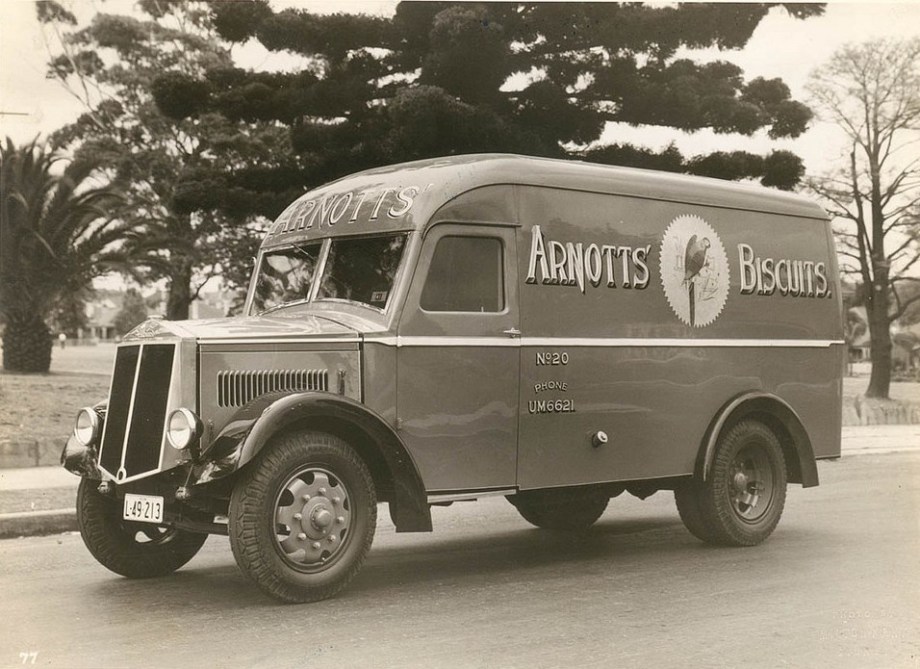
In 1893 William Arnott Snr. left his sons in charge and visited Scotland with his wife and a daughter. On his return in 1894 he bought a factory in Sydney, opened at Forest Lodge that same year and took his sons into partnership. He had some forty employees in 1880 and by 1894 the number had increased to nearly eight hundred in Sydney and Newcastle. He retired in 1899 and moved to Strathfield near Sydney,
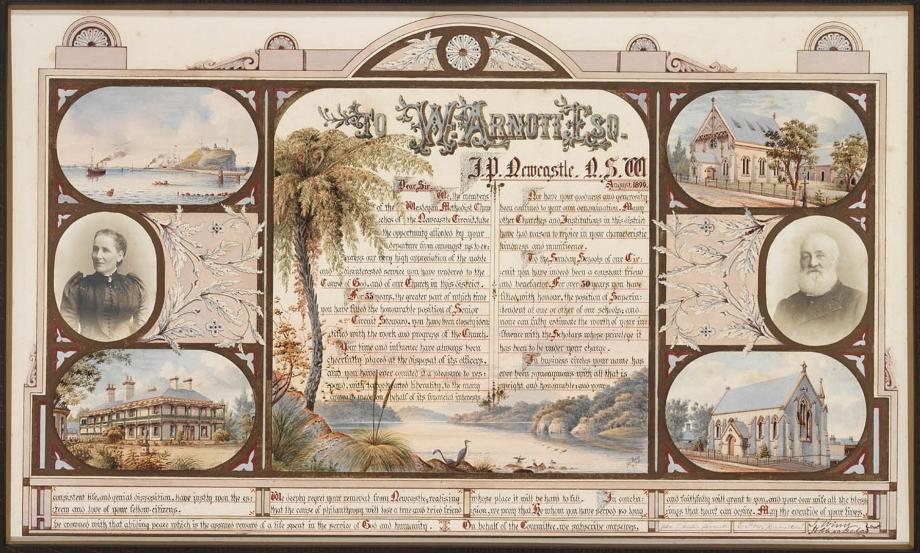
Illuminated address] to W. Arnott Esq. J.P. Newcastle, N.S.W. August 1899 [from the] Wesleyan Methodist Churches of the Newcastle Circuit [on William Arnott's departure from Newcastle] / Alfred Sharpe. Title is taken from the main text of the address. Signed along lower edge by Committee Members of the Wesleyan Methodist Churches, Newcastle Circuit: John L. Austin; E. Foy; and J. Winn. Each vignette is signed lower right 'Alf Sharp NSW' The main inscription of the address is 'framed' by an image of a tree fern, left, with a view of the Hunter River on lower edge.
Four watercolour and two photographic vignettes surround the address (anti-clockwise): [Nobbys]. A similar view by Sharpe is located at PX*D 294, f. 5, Mitchell Library Pictures Collection; [Photographic portrait of Mrs William (Margaret) Arnott]. Image No.: a928736 courtesy State Library of NSW
And a shift in the opening of yet another factory in 1904
But at Homebush, with a ten-acre floor space, there is an enormous factory that does nothing else except make biscuits. It makes them so efficiently and so tastefully that the name of the factory has now become a household word and the saying, 'When are biscuits not biscuits? When they're not Arnott's,' is now as well known as the phrases, 'God bless our home,' or 'Australia will be there!'
This factory was established in 1904 and founded by the late Wm. Arnott. It was the realisation of a dream of many years.
A Big Adventure
At the corner of Hunter and Wolfe streets, Newcastle, sixty years ago, Mr. Arnott started out on tho big adventure of his' life. His factory in those days could almost fit into the smallest room' in the present Homebush buildings. It was not only unpretentious, it was cramped. Romance of a Great Australian Industry, (1928, September 23). Sunday Times (Sydney, NSW : 1895 - 1930), , p. 22. Retrieved from http://nla.gov.au/nla.news-article122805407
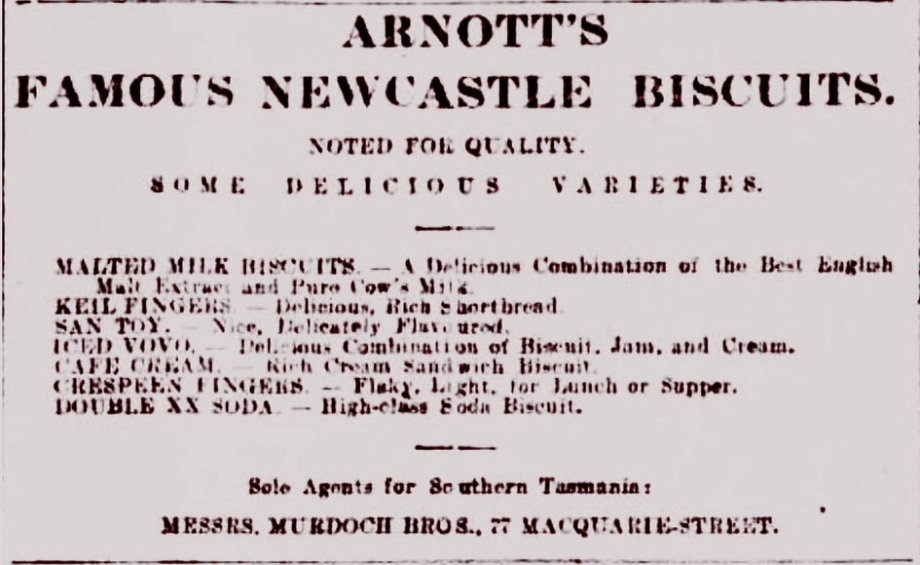
Arnott’s biscuits, The Mercury, Tuesday 5 September, 1905, page 3. Courtesy of the National Library of Australia, via Trove digitised newspaper archive.
HALF A CENTURY OF PROGRESS IN BISCUIT MAKING
And No Grievances Worth Mentioning
The history of the firm of William Arnott, Ltd., the well-known manufacturers of biscuits and cakes, is an industrial romance. It is the story of the development from obscurity to the biggest and most completely equipped concern of its kind in the Southern Hemisphere. The foundation and early growth stress the importance of the effect which a thorough early training may have on the after-life of an individual.
In the late sixties. William Arnott, the founder of the firm, was the proprietor of a small pastrycooking and confectionery business in Hunter-street, Newcastle. An accompanying picture, photographed in 1867, shows this gentleman, already well on in life, standing with one of his daughters in front of his shop.
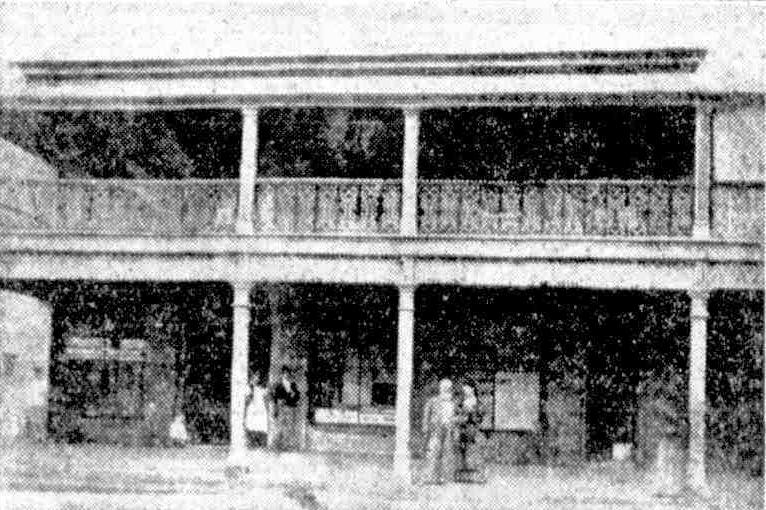
WILLIAM ARNOTT'S BUSINESS PREMISES, 1867.
He had little but a complete knowledge of his trade, gained during a seven years' apprenticeship served in Scotland. At this time there was a great local demand for ship biscuits. Those responsible for the supply of them to coastal and overseas vessels, mostly sailing ships, experienced considerable difficulty in getting their wants satisfied.
William Arnott saw the opportunity presented and seized it. He laid himself out to cater for this description of the trade, and capturing a big share of it. From that moment he never looked back. The result was that he was able to expand his business in other directions, so that when he died early in the present century, there was a well established and flourishing concern for his sons to build their fortunes on.
Newcastle Outgrown
Quality and cleanliness were the keynotes of the father's success, and the boys clung tenaciously to these as planks of their business platform. Soon the Newcastle establishment was outgrown, and it was decided to create headquarters nearer the State's centre of distribution.
Machines of Enormous Capacity
Thus it was that the factory at Homebush came into being twelve years ago. Today the buildings' occupy six acres of land and give employment to 1300 persons — boys and girls, men and women. Here, practically every wholesome ingredient known to the biscuit manufacturing industry is made use of in the preparation of the many widely differing classes of biscuits that are turned out and machinery of the most modern design is kept humming in the manufacture of millions of these many-shaped delicacies daily. To the uninitiated, the use of the word millions in the preceding paragraph will appear an exaggeration, but an inspection of the premises would satisfy all that it is used advisedly. For in the plant are many machines, each of the' biggest two of which has a capacity of nearly a million biscuits in a working day of eight hours. And such is the demand for these delicacies that in many instances they are on the shelves of city and suburban stores, or stored away in the holds of steamers bound for coastal and Interstate ports on the day of their manufacture. Thus is assured a freshness that partly explains the frequency with which the stipulation 'Arnott's' appears in wholesale and retail orders for biscuits. So we have demand compelling freshness which in turn creates demand —a circle, but not a vicious one.
Encouraging Local Industry
The growth of this business has not been selfish. Every stride made by it in its upward march has had its beneficial effects on other Australian industries, for the directors of William Arnott, Ltd., have insisted on the use of locally produced ingredients, materials and machinery wherever possible. That such a .policy could not help but have a decided influence on the development of this country is apparent. A walk through the various departments; wherein the actual manufacture and packing of the biscuits takes place, creates many impressions on the mind. Compelling recognition is the high standard of conditions under which the employees carry out their respective duties. The comfort of the hands must have been one of the first considerations of the architect who drew up the plans for the buildings. Every man, woman, boy and girl appears cheerful as he or she performs the allotted tasks. Dining rooms are provided, and morning and afternoon tea is available for all who feel inclined for it. Any duty which necessitates the subjection of the person performing it to a heat above normal, as a result of the existence of the ovens, falls to the lot of a man or boy — the girls and women are mainly employed in the packing, labelling, icing and creaming departments.
Spirit of Comradeship
Between all branches of the services there is that spirit of camaraderie so essential to the smooth running of a business. In fact it is claimed that industrial disturbances have seldom affected this great concern. These facts render it easy to understand why Arnott's never experience difficulty in filling any vacancy that may occur in their staff. They help to explain, too, why the old-fashioned objection to factory life, which still exists in many minds, is gradually disappearing.
The Giant Mixers
Processes of manufacture vary considerably according to the description of the biscuit to be produced. On one hand ingredients are mixed in comparatively small quantities so that they may be quickly passed through the ovens, a delay before baking would have a detrimental effect on the dainties, the essential quality of which is airiness. Then there are the huge electrically driven mixers which each knead hundreds of pounds of dough at a time. Through these machines pass the factory's best-known line — Arnott's Famous Milk Arrowroot Biscuits.
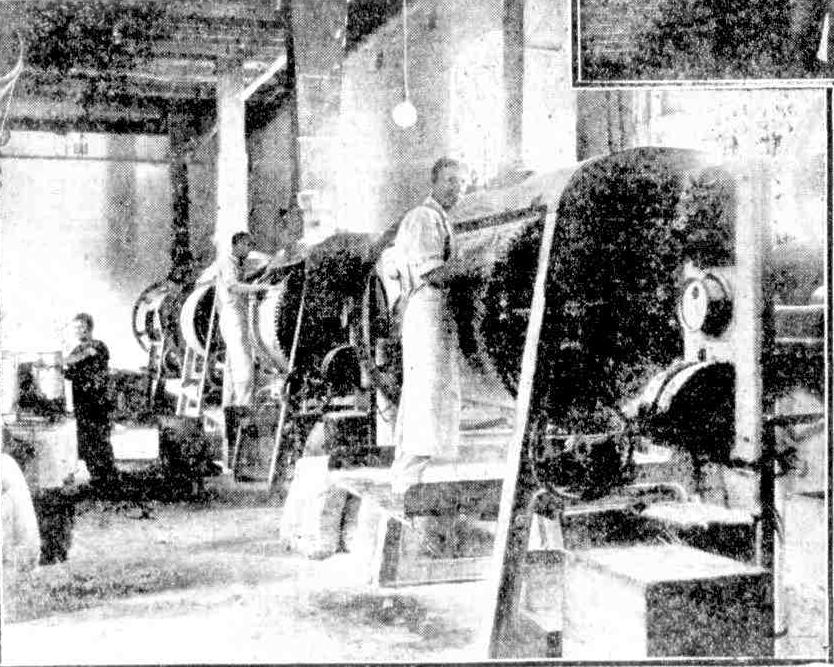
THE MIXING MACHINES, IN WHICH THE DOUGH IS KNEADED.
Let us follow the making of this particular- biscuit further. It is simple yet interesting. From the mixers the dough is transferred in huge wheeled wooden troughs to the rollers, ,and from there to the cutting or stamping machines. Once the dough is subjected to these wonderful contrivances it is kept moving until the trays, their passage through a cooling machine, and their transference to the tables where the packers are at work. Dexterous hands either apply the paper wrapping in which many of the reaches the packers in the form of biscuits. The plastic sheets first pass through sets of rollers which compress them to the required thickness. They are then automatically conveyed along the machine and through the cutting blocks which stamp out the biscuits at the rate of 2000 a minute. The next task performed by this piece of mechanism is the separation of the biscuit shapes from the dough remnants, the transference of the former to the trays on which they are baked and the rejection of the latter for further rolling. This is completed handy to the oven entrances, and boys are kept busily engaged removing the laden trays to the conveyors which carry them through the ovens. -
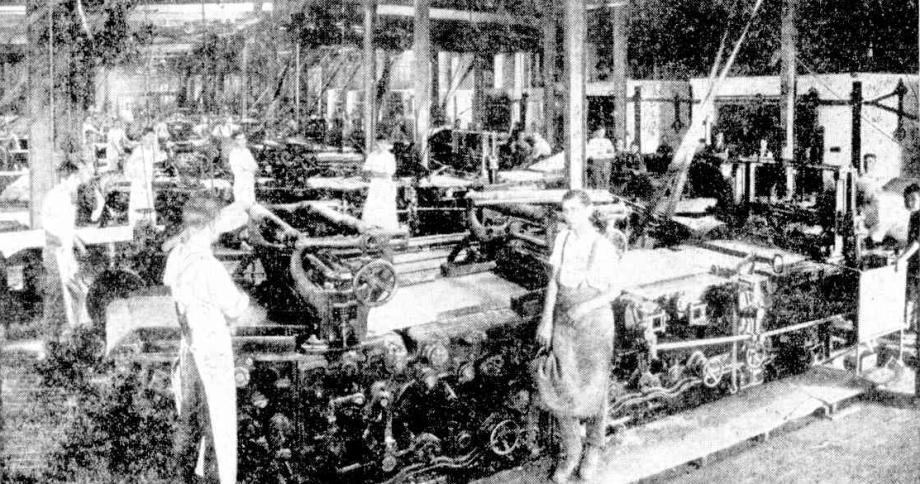
AN GENERAL VIEW OF THE ROLLERS, CUTTING MACHINES, AND OVENS.
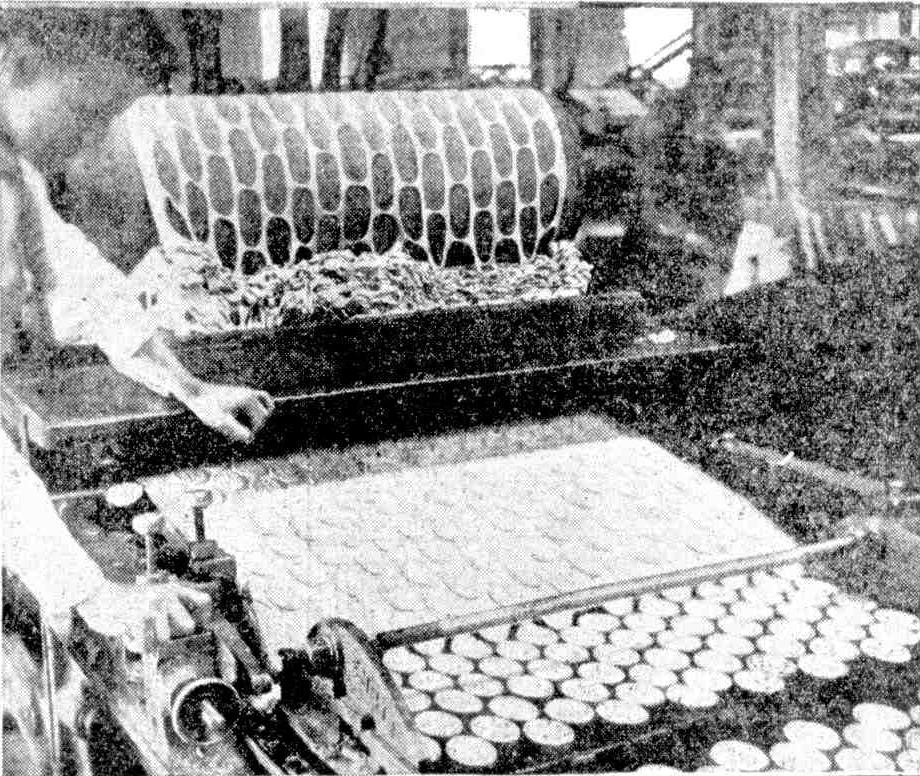
ARNOTT'S GO TO PRESS— ARROWROOT BISCUITS READY FOR THE OVEN.
The ovens are coke-fired, and in them is generated an intense heat. The biscuits enter at one end, and are continuously in motion until they emerge at the other — baked. Mechanical conveyors' continue to operate. They are responsible for the removal of the biscuits from ... biscuits are sold, or pack the attractive looking delicacies in tins of assorted sizes. The labelling and Wrapping of the tins is the next and final operation ere the biscuits, are ready for delivery.
The Creaming' Room
Though the arrowroot biscuits are ready for packing immediately they are cooled down after emerging from the ovens, there are many classes of biscuits made in this factory which have to undergo subsequent treatment in the icing or creaming, departments. Take, for instance, those which may be classed as cream sandwiches. After these biscuits have been baked in the main factory they are carried by conveyors to the creaming-room. Here a delicately-constructed machine, under the control of girls, applies the desired amount of cream to one surface, and then carries the biscuit forward to a position where the sandwich is automatically completed.

THE CREAMING ROOM. THE WOODEN STRUCTURES ARE THE COOLING CHAMBERS.
The Making of Wafers
The toothsome wafer is prepared in a fashion entirely different from the methods adopted in the making of all other descriptions of biscuits. The ingredients are mixed into a liquid paste and placed ma receptacle which stands against the wafer-making machine. From here, the liquid is pumped by the working of the machine on to pattern plates, where it is kept in position by other plates, similarly designed, which fit down on top of it. Locked together, with the wafer paste in between, the two plates pass, under the influence 'of high-power gas flames, emerge there from and open, thereby permitting the extraction of the completed wafer and the addition of more paste. Apart from the actual, removal of! the prepared sheets of wafer, which are about eighteen inches square, the operations described arc automatic.
Busy Tinsmiths
An absolute essential to the business is an up-to-date tinsmiths' shop. Arnott's have installed a plant capable of turning out 6000 tins of all sizes in a day. The making of new tins and the repairing of old ones necessitates the employment of a big staff and the holding in reserve of enormous quantities of tin plate. Despite the considerable charge which is made by the firm as a deposit on tins, large numbers are lost, and the careless handling of empties, combined with the continual occurrence of accidents, is responsible for the return of many in a very battered condition. Adjacent; to the tinsmiths' shop is the tin sterilising department. Here the tins are subjected to exceedingly drastic treatment in furtherance of the cleanliness policy. One of the processes consists of the steeping of the tins in boiling water for a period of 20 minutes.
Local Paper Used
One of the Australian industries to benefit considerably by the operations of William Arnott and Co. is that of papermaking. New South Wales and Victorian concerns supply the bulk of the paper and paper-board used by the firm. That this is a considerable quantity will be easily understood when consideration is given to the many uses to which paper is put in the biscuit business. Paper shavings used in packing are cut on the premises, and the printing of labels gives employment to a staff of lithographers. The printing plant is a modern one, the efficiency of which may be gathered from a study of the well-known label which depicts a rosella eating a soda biscuit. Subsidiary to the trains which load at the door of the department in which the majority of the biscuits are made, 23 motors and a number of horse-drawn vehicles, as familiar a sight to city and suburban dwellers as the labels, are engaged in the delivery of Arnott's products, and find shelter at the Homebush works. The stables and the garage are in keeping with the remainder of the establishment — thoroughly up-to-date — and a staff of mechanics is employed to effect all running repairs to the lorries and cars.
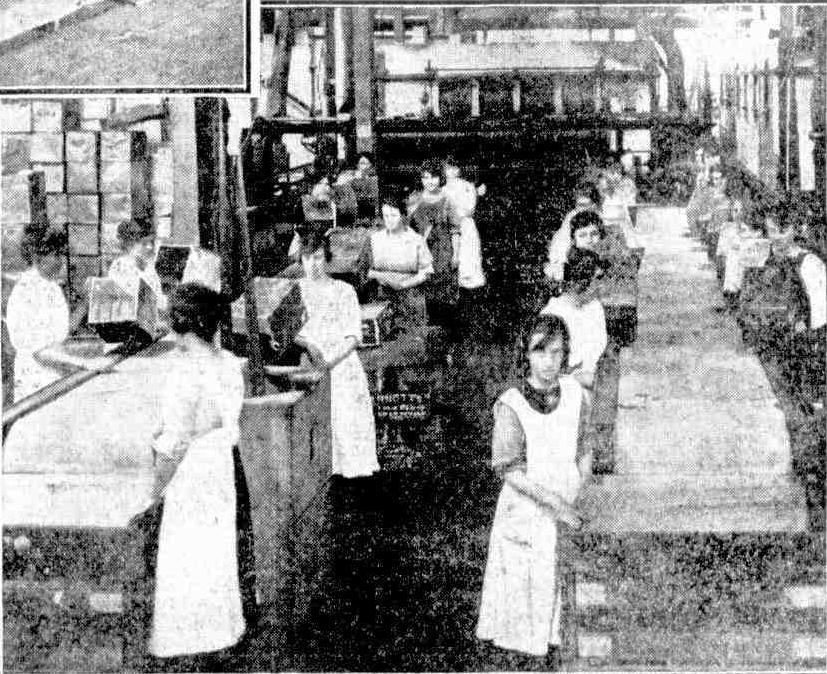
A BATCH OF BISCUIT PACKERS AT WORK.
Christmas Cakes
Just at this time of the year there is ever a great activity at Arnott's Newcastle factory, for it is there that the Christmas cakes are made. Always eagerly sought after, an unprecedented demand for this line has set in this year. At present four huge ovens are being installed. When sufficient machinery to keep them burning is set up the output of the factory, and, of course, the number of employees, will be increased considerably.
An Asset to the State
It is pleasing to know that these progressive, methods are the methods of Australians, who have proved time and again that they have the good of their country at heart.- The business is such as would be an asset to any nation, if only for the fact that it directly employs approximately 1600 hands; it is not only work that is found for all these people — the majority are provided with pleasant, clean, healthy and well paid occupations.
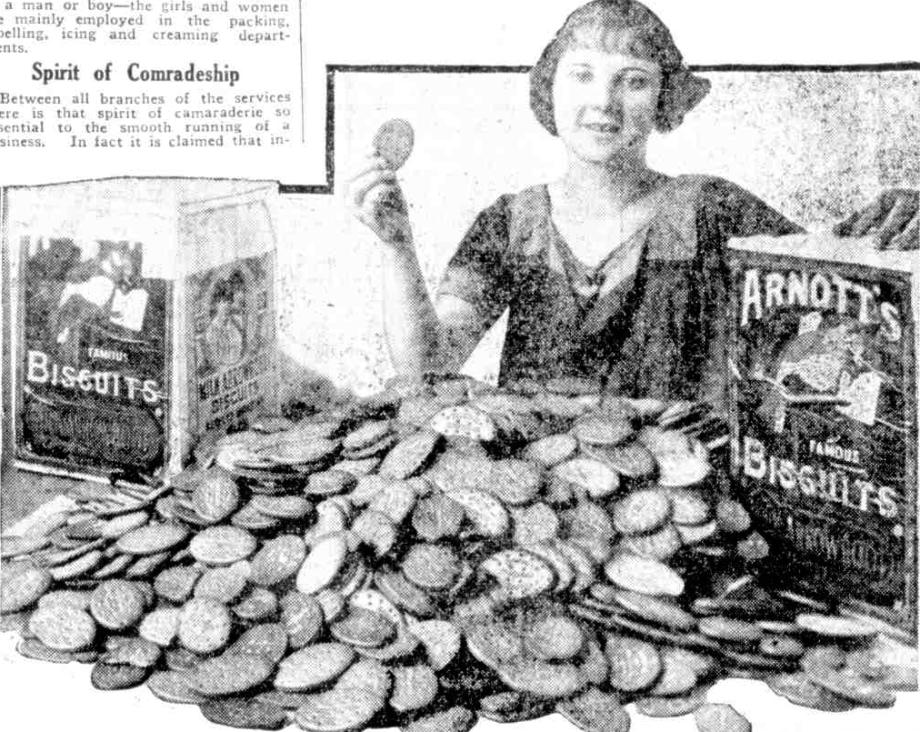
A DAINTY PACKER'S OFFER.
HALF A CENTURY OF PROGRESS. (1920, December 19). Sunday Times (Sydney, NSW : 1895 - 1930), , p. 6 (Sunday Times Christmas Magazine.). Retrieved from http://nla.gov.au/nla.news-article120522780
Arnotts Biscuits at the Royal Easter Show
ARNOTT'S BISCUITS.
The stand devoted to the exhibition of Arnott's biscuits in the Hall of Industries has made a strong appeal to thousands during the show, especially to the large multitude of children who have visited the exhibit to secure samples of the choice biscuits made by this old-established firm.
The trade-mark, the red-polled parrot eating with relish a Sao biscuit, has been used effectively in the decoration of the stand, as models of the bird swinging on a bar are suspended at each corner. A large mound of biscuits in great variety stands in the centre, above which a large coloured glass case revolves, and other revolving cases filled with dainty biscuits are shown at each corner. Daintily dressed girls from Arnott's factory attend to visitors at the stand. ARNOTT'S BISCUITS. (1924, April 19).The Sydney Morning Herald (NSW : 1842 - 1954), , p. 16. Retrieved fromhttp://nla.gov.au/nla.news-article16139001
Arnott's Famous Biscuits At the Show.
THE name Arnott's as applied to biscuits is fabulous. They have been eaten and appreciated by three generations, and no one can visualise this time honoured and healthful custom being carried into dim ages ahead. High standards of manufacture and quality have laid sure foundations as exemplified in Arnott's famous Milk Arrowroot biscuits, now as popular with baby as they were with his grandfather. On such sure foundation has been built up a whole galaxy of attractive and nutritive biscuits suited to every taste and to every occasion, whether in the home or at social functions where elegance and variety are desired equally with quality. Thousands of visitors to the Hall of Industries were naturally attracted to Arnott's handsomely-decorated and illuminated court treated in an effective colour scheme of royal blue and amber. Hundreds of coloured electric bulbs made the stand a thing of beauty in the evenings, and at each corner of the stand was a representation of the well - known 141b tin of Arnott's biscuits with the parrot on the label. Above the centre of the stand was a revolving canopy, elegantly decorated and illuminated with candles and miniature birds, and below a great mound composed of tins of all the popular biscuits manufactured by the firm at Homebush. Of special interest were the two new biscuits- — Honey- suckle and Solo Ice Wafer — both delightful creations and welcome additions to the afternoon tea and supper table. Honeysuckle is a most delicious sandwich biscuit filled with a cream that is flavoured with pure garden honey. This biscuit will become immensely popular, ample evidence of which is already established.
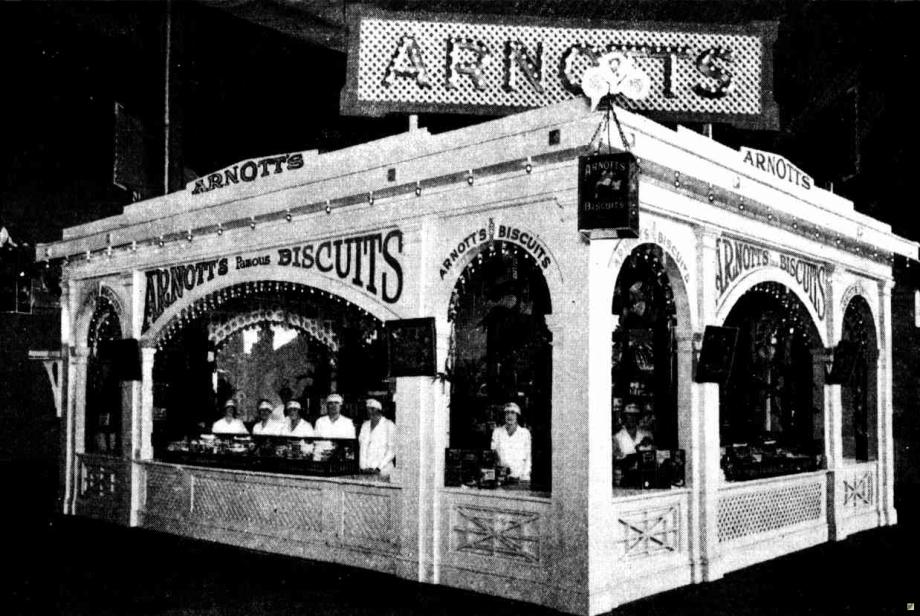
Girls from the factory attired in white, were kept busy distributing thousands of samples in tins and boxes to show visitors.
Arnott's Famous Biscuits At the Show. (1927, April 20). Sydney Mail (NSW : 1912 - 1938), , p. 64. Retrieved from http://nla.gov.au/nla.news-article169145955
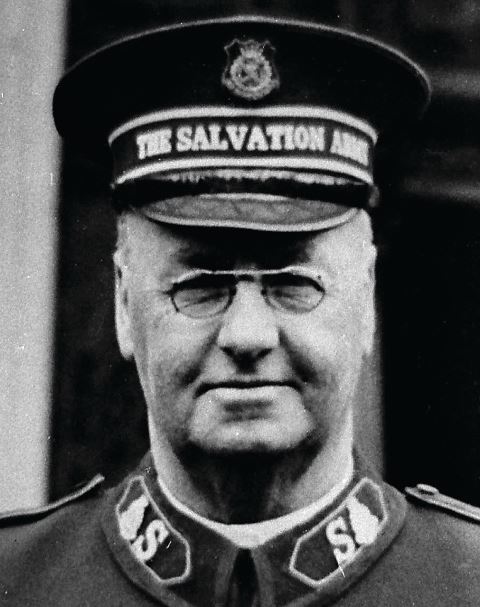
Of course we would be remiss to not investigate whether a ship's biscuit maker actually went aboard ships or engaged in sailing.
Short answer? Yes, of course! There were numerous trips overseas by all generations of Arnott's, all around the world nine month and year long trips - one gentleman of one generation marrying an American lady - which lead to some conjecture on that old story regarding the wonderful yacht 'SAO' once owned by RPAYC Commodore Dr. Milford, the Sao biscuit - which is another form of a Sea Biscuit, just closer to a pastry form (and used to make Vanilla Squares by our mothers and grandmothers!) and still 'aboard' that wonderful Arnott's logo.
Some research shows the Yacht Sao was actually named after a water nymph myths - she was a daughter of one Doris, one of the Nereids who were worshiped as nymphs of the sea, kind and generous, always ready to help the sailors in danger. For its beauty, the Nereids also used to dominate the hearts of men. Sao in this context means 'saving'.
The Yacht SAO was bought from Dr. Milford by J F Hoare, a Mr. Soutar then buys it from him ( November 1889) - J B Holdsworth buys from him October 1893 - Mr. Woolcott-Waley buys February 1896 - these were all sailors who owned other yachts we've run briefly in other articles. Just Google us and their names and they'll pop up - o look under Aquatics or RPAYC sections in Past Features.
There is another curious traveling item discovered during our sea biscuit/tack biscuit resaerch which may look similar to the Sao biscuit to others too:
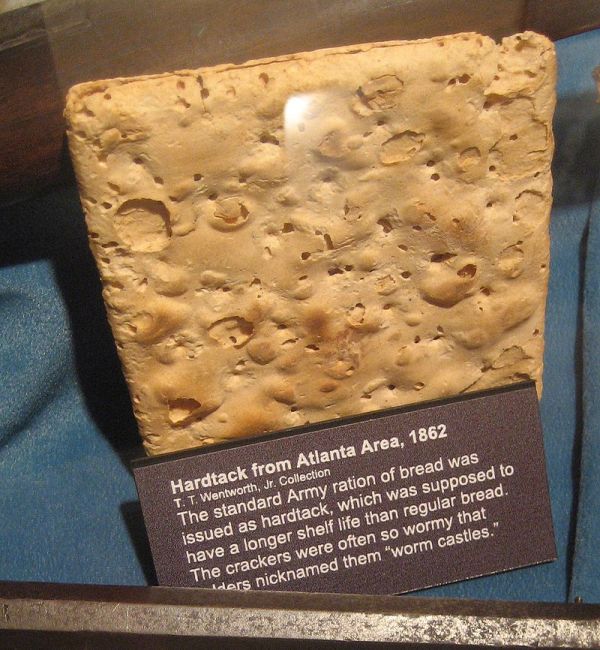
Preserved hardtack from U.S. Civil War, Wentworth Museum, Pensacola, Florida. Photo courtesy Infrogmation of New Orleans
As newspaper reports on the nine month and year long trips by succeeding generations of Arnott family members include references to diligent investigations of new and better way to do things, and other biscuits, you cannot help but wonder if one family member thought of a better way to do and make use of or adapt this hard tack version of a sea biscuit.
They too may have been influenced by the 'saving' definition of this name and most certialy would have met and conversed with all of the above yachtsmen - see below!
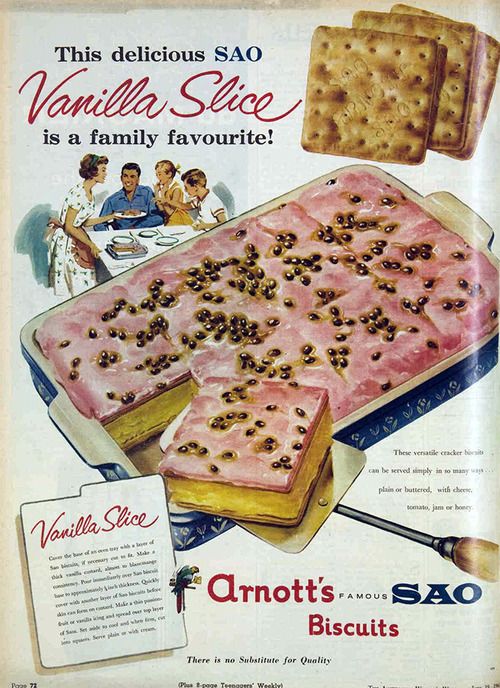
The Arnott's didn't just venture overseas to holiday, rest or learn more about factories and biscuit fare - they also ventured onto the water to sail:
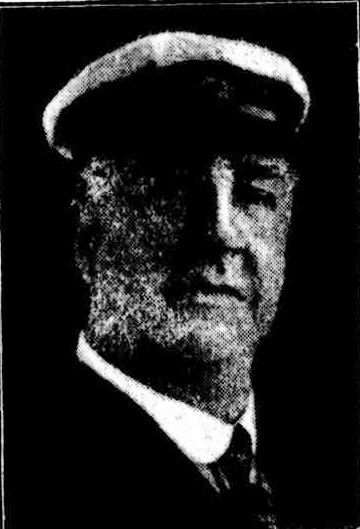 OBITUARY. MR. SAMUEL ARNOTT.
OBITUARY. MR. SAMUEL ARNOTT.
Mr. Samuel Sinclair Arnott, formerly man-aging director of William Arnott, Ltd. biscuit manufacturers, of Homebush, who died at the residence of his daughter, Mrs. Varcoe-Cocks, in Prince Albert-street, Mosman, on Wednesday night, was 73 years of age.
Mr. Arnott was the second son of William Arnott, who founded the firm. He was born in Newcastle, where he later took a keen interest in sailing, being one of the pioneers of the Newcastle regatta, of which he was president for many years. He was also an ex-commodore of the Motor Yacht Club.
Mr. Arnott came to Sydney in 1908, and be-came managing director of the business. He was affectionately known to thousands of employees and business acquaintances for his kindly disposition and transparent honesty.
Early in life he became keenly interested in stock breeding, and his prize Jersey stock won many blue ribbons at country shows. In addition, he bred trotting horses, the most well known of which was ''Harold B."
Mr. Percy Arnott is a son.
The funeral will leave the Wesleyan Methodist Church, Myahgah-street, Mosman, after a service, commencing at 10.30 am., to-day, for the crematorium at the Northern Suburbs Cemetery.OBITUARY. (1934, October 26). The Sydney Morning Herald (NSW : 1842 - 1954), , p. 16. Retrieved from http://nla.gov.au/nla.news-article17112500
Just one snippet of Mr. Samuel Arnott's sailing days:
SAILING. Mr. S; Arnott, commodore of the Port Hunter Sailing Club, who was on board the Gosford on Saturday, and looking well alter his trip 'up north’, promised a juvenile porker for the pig with a greasy tail event at the Sailing Club's annual picnic next month. He notified intending competitors that they would have to be on their best behaviour to catch him as he was bred at Breeza, the home of galloping and Jumping porcines, and was being specially trained for this event. SAILING. (1900, March 5). Newcastle Morning Herald and Miners' Advocate (NSW : 1876 - 1954) , , p. 6. Retrieved from http://nla.gov.au/nla.news-article133212888
Samuel's son:
VANESSA LAUNCHED
MR. P. S. ARNOTT'S YACHT
MR. PERCY S. ARNOTT's 8-metre yacht, Vanessa, was launched today from the yards of James Hayes and Som, Careening Cove As Mrs. Amott broke a bottle of champagne bottle the bows, a representative gathering of yachtsmen associated with all clubs raised a rousing cheer. Later, at Royal Sydney Yacht Squadron's club-house, Mr. S. M. Dempster presented Mr. Amott with a dinghy on behalf of the crew, and toasts were honoured. Vanessa will compete in the test races which will be held to select the N.S.W. defender of Sayonara Cup. She will also take part in the racing Programmes of the various clubs. Vanessa is the first 8-metre yacht to be built in Australia, and will make the third of her class on Sydney harbour. VANESSA LAUNCHED (1928, November 1). Evening News (Sydney, NSW : 1869 - 1931), , p. 14. Retrieved from http://nla.gov.au/nla.news-article117458912
The Sydney Mail restores some Australian aquatic history worth keeping an accurate record of once again!:
Vanessa
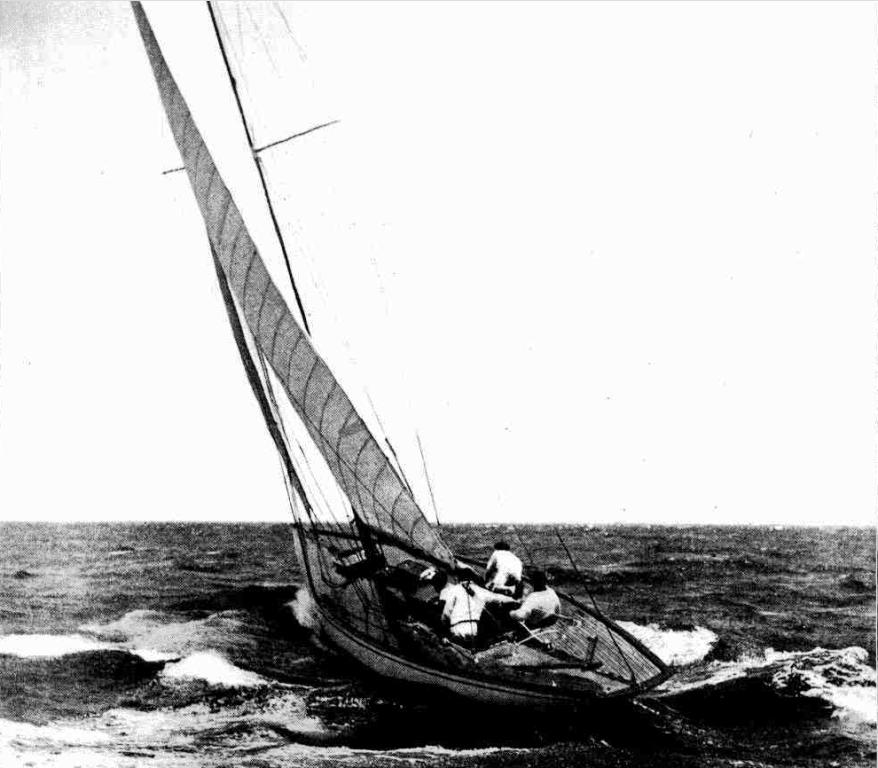
This fine picture of the winner of the contest for the Sayonara Cup off Sydney Heads was taken when the local yacht was showing her heels to the Victorian challenger, Acrospire IV. She presented a fine sight from the following launch, with the ‘Sydney Mail’ staff on board, in a fresh breeze, the spray making good photography a matter of some skill. The Vanessa is owned by Mr. P. S. Arnott. Vanessa (1930, January 22). Sydney Mail (NSW : 1912 - 1938), , p. 5. Retrieved from http://nla.gov.au/nla.news-article160631870
In the races held by the Royal Prince Alfred Yacht Club during the season for the large class yachts, the results were as follows: — Vanessa, P. S. Arnott, 1st Jackson Cup, 1st Basin Cup, 1st Albert Gold Cup, 1st Nossiter Cup. Vanessa also won the Lipton Cup and the club's special prize for the best record in races of all clubs. Sailing (1930, July 9). Referee (Sydney, NSW : 1886 - 1939), , p. 26. Retrieved from http://nla.gov.au/nla.news-article131167910
Arnott Lowers Flag - OUT OF BIG YACHTING - Vanessa To Be Sold
YACHTING has lost one of its greatest supporters by the retirement from the racing arena of Mr. Percy S. Arnott. Having achieved his ambition in sport by having twice won the historic Sayonara Cup with Vanessa, Mr. Arnott finds that the time has arrived to devote closer attention to business.
Mr. Arnott has been the Upton of Australian yachting since pre-war days. He has spent thousands in building and equipping yachts, and his greatest achievements were in the Sayonara Cup when he defeated the Victorian challengers Eun-Na-Mara (L. Randerson). in 1929, and Acrospire III (Joe White) last year on the N.S. Wales coast. In addition he was the big man behind the organisation last year that raised the finances for sending a fleet of 21ft. restricted class yachts and yachtsmen to Melbourne, and regained the Forster Cup with N.S.W. Ill, sailed by J. L. Neilson. He also pulled off the N.S. Wales title for the deep keelers. On the Market
Mr. Arnott is still the owner of the 8-metre Vanessa and has definitely decided to place the craft on the, market for sale. If a buyer has not been found the craft will not carry Arnott's racing colors during the season starting in October, but will remain on Stewart Sandeman's slips at Careening Cove. The retirement of the popular owner naturally came as a bombshell to the committees of the Royal Prince Alfred Club, and the Royal Sydney Squadron. They were in a quandary as to what boat could be secured to defend the Victorian challenge for the Sayonara Cup next January. Conferences were held with Mr. Arnott, and though he absolutely refused to race in the various club events, he generously decided to place the boat at the disposal of the joint clubs to defend the cup, and to allow the organisations to select their own crews. It was also agreed that in the event of Vanessa finding a new owner in N.S.W. the purchaser is to allow the boat to be used as a cup defender.
Another Retirement
Another big yachtsman who has retired from the sport is Mr. E. P. (Harry) Andreas. He has given up the post of the Rear-Commodore of the Prince Alfred. Ill-health is given as the cause of the retirement, and the annual meeting of the big club within, the next fortnight, Mr. R. C. Packer, who last year paid £6000 for Morna, will be the junior flag officer. VANESSA. Arnott Lowers Flag (1930, August 24).Truth (Sydney, NSW : 1894 - 1954), , p. 5. Retrieved from http://nla.gov.au/nla.news-article169387785
NO PARALLEL - Yacht's Fine Record W. E. ARNOTT'S NETTLE
(By Jackyard)
In the history of N.S.W. yachting no yacht has experienced such a wonderful first season as that of the Hayes-built 21-feet class Nettle, which has been skippered throughout by her owner, Mr. W. E. Arnott.
At the recent Brisbane carnival Nettle secured the Australian championship with two wins and a second, securing 24 points out of a possible 30. Nettle’s performances in Port Jackson for the season are nine wins, two thirds and one fourth in 12 starts — a record which Is likely to stand for many years to come.
Mr. Arnott attributes his success to the fact of his not only possessing a good boat, but to the work of an energetic and willing crew. ... NO PARALLEL (1923, March 6). The Sun (Sydney, NSW : 1910 - 1954), , p. 5 (FINAL EXTRA). Retrieved from http://nla.gov.au/nla.news-article223465218
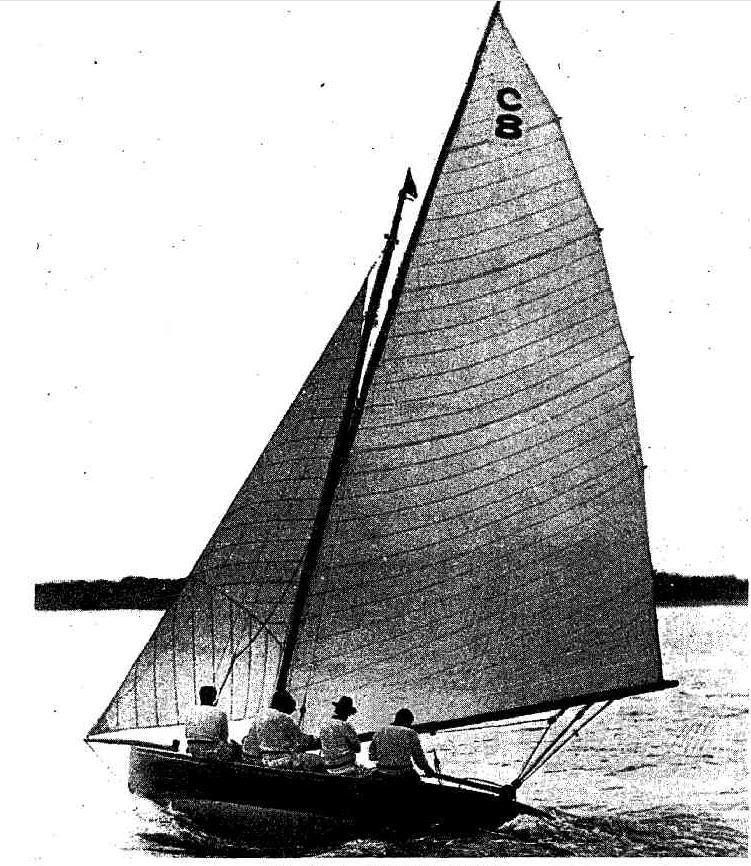
MR. W. E. ARNOTT'S NETTLE, The champion 21ft restricted class yacht of Australia. Yachting: Nettle Wins the Forster Cup (1923, February 28). Sydney Mail (NSW : 1912 - 1938), , p. 14. Retrieved from http://nla.gov.au/nla.news-article159024869
And of course there is another Pittwater connection with all these Arnott's family members who loved being on the water as much as ensuring those travelling would have something decent to dip in their tea, as every sailor worth their salt in Sydney of yore or today visits the Pittwater estuary for regattas or for leisure:
PITTWATER BREEZES - Boomerang's Success
(By Jackyard)
As Mr. W. E. Arnott's Nettle won the morning race for the restricted clans yachts at Pittwater Regatta, it seemed a foregone conclusion that the long run of successes enjoyed this season would he sustained. However, in the afternoon young Alexis Albert sailed Boomerang In great style, and Nettle was beaten by 33 seconds. Dormy, though handicapped by a sprung mast, did well to got third, but Corella had all the worst of the deal In the light shifty breeze, and after rounding Sandy Point mark In the lead found the "doldrums." which caused the Governor-General's yacht to be passed by all the others. Boomerang sailed with a new mast, with lighter rigging than formerly, and this was of material assistance In the light breeze. The handsome trophy given by Mr. Fred. Young, president of the regatta, was presented at the regatta dinner to Mr. Frank Albert, who announced his Intention of donating a cup for the 1924 gathering. Nothing had a chance with Aoma In the all yachts' race for the Scotland Island Cup. This craft, with Scotia, was best served by the ....PITTWATER BREEZES (1924, January 1). The Sun (Sydney, NSW : 1910 - 1954), , p. 4 (LATE SPORTING). Retrieved fromhttp://nla.gov.au/nla.news-article224571415
GOOD SAILING By Arnott's Nettle
WALLY ARNOTT, the biscuit magnate, put up a wonderful performance in yesterday's yacht race in winning the Tarring Cup, after having started a quarter of an hour behind the other boats.
AT first the Homebush skipper did not get a proper gauge of the breeze. He stacked on his second suit, but afterwards came back and changed his gear by stepping a small mast and setting a third suit of sails. Arnott had Nettle so snugly rigged that he did not seem to care how far the others were ahead. Nettle soon made her presence felt, and won by 18min. 45secs. from Norman Wallls's Awinya, with Boomerang third. NETTLE. She annexed the Tarring Cup for her sailing performance yesterday. GOOD SAILING (1926, January 10). Truth (Sydney, NSW : 1894 - 1954), , p. 5. Retrieved from http://nla.gov.au/nla.news-article168722951
DICK and Joan Willis went for their honeymoon recently in Dick's yacht the Water Witch, and they are spending the Christmas holidays on board with Harry Humphries and David Willis. Joan's parents, Mr. and Mrs. J. W. Scott Fell, and her sister, Barbara, and Dick'smother, Mrs. E. V. Willis, ate Christmas dinner with them yesterday.
Mr. and Mrs. Bill Dawson spent Christmas Day at Palm Beach on the Oomabah-the cruiser belonging to Nea's father, Mr. Percy Arnott.
ANOTHER "at sea" Christmas was spent by Mr. and Mrs. Harold Arnott and their family on board the Lauriana-named after Laurie. They're anchored at Palm Beach, and their guests over the holidays will include Barbara Lotherington, Mr. and Mrs. BillArnott, and Harry Long. Terry Arnott's fiancee, Alison Grant, also to be there. ROUND THE TOWN. (1939, December 26). The Sydney Morning Herald (NSW : 1842 - 1954), p. 2. Retrieved from http://nla.gov.au/nla.news-article17626036
Week-end at Palm Beach.
Mr and Mrs Bill Dawson of Edgecliff spent the week-end at Palm Beach on board the Oomoobah which belongs to Mrs Dawson s father Mr Percy S Arnott. SOCIAL AND PERSONAL. (1940, February 5). The Sydney Morning Herald (NSW : 1842 - 1954), p. 4. Retrieved from http://nla.gov.au/nla.news-article17665856
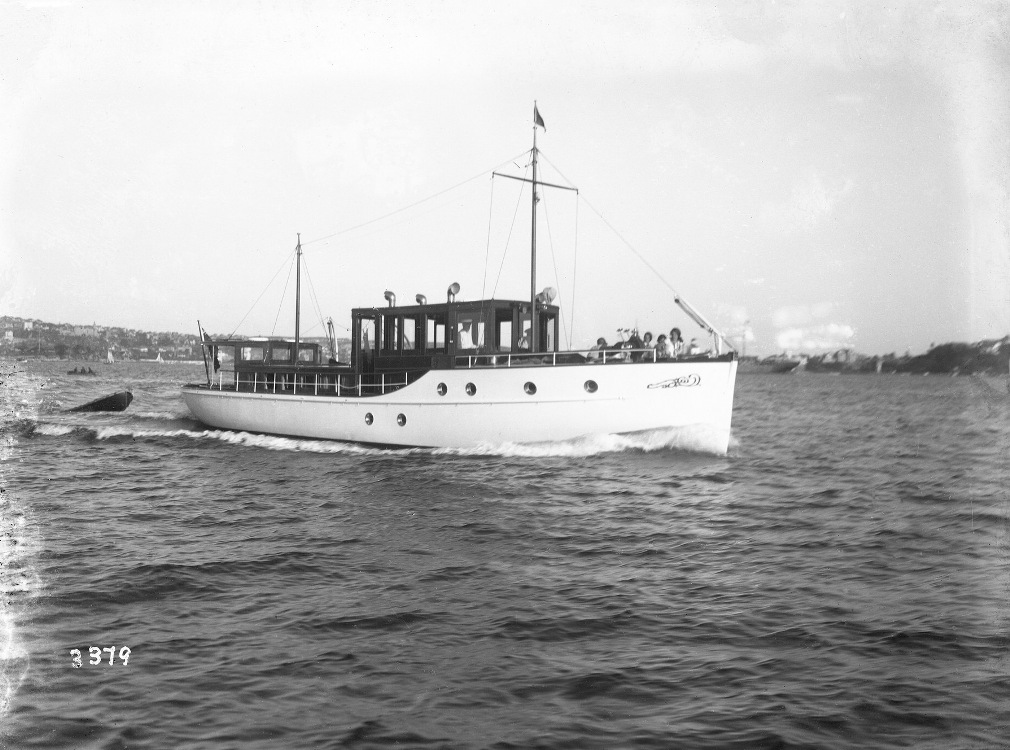
OOMOOBAH was built for the Arnott family (of Arnott's Biscuits) and launched in 1927. OOMOOBAH was one of the most luxurious vessels of the day, and its launch was covered in a large feature in the April 1927 edition of 'The Australian Motor Boat and Yachting Monthly.' This photo is part of the Australian National Maritime Museum’s William J Hall collection. Image Object no. 00011879
William Arnott passed away in 1901. His success was founded on hard work, integrity and an insistence on quality...and seeing what the market or people needed and meeting that need.
He was a sincere Christian, known for his lovable and kindly nature - which shows in his face in photos taken of him. He and his wife were active in philanthropic work and the Wesleyan Church throughout their lives.
"Quality and cleanliness" may have been early keynotes of this gentleman's Success, as was "the best pays best" prior to that. The "there is no substitute for quality" of today carries his ethos, and his sea biscuits, forward today - there really is no substitute for quality, whatever you're doing and in whichever way you do it - the proof is in the pudding, or in this case - the biscuit!
DEATH OF MR. WM. ARNOTT.
The news of the death of Mr. Wm. Arnott, which sad event took place at Arnott Holme, Strathfield, at a late hour last evening, will be received everywhere with the deepest regret. The deceased gentleman left Newcastle nearly two years ago, and took up his residence at Strathfield. He had been in failing health the whole of that time, and the end was not unexpected. Mr. Arnott was born in Edinburgh in 1827, and came to New South Wales when but 20 years of age. He began business in Hunter-street as a baker in 1865, and having made a success of this, he established the present large factory in Melville-street, Cook's Hill, which has since undergone remarkable expansion, and now finds employment for hundreds of men, boys, and girls. Of late years the conduct of the business has been largely directed by his sons. Apart from business, he was widely known in connection with the religious and charitable institutions. For 22 years he was superintendent of the Newcastle Wesleyan Sunday School, and for six years held the same office in the Wesleyan Sunday School at Mayfield. Mr. Arnott was devotedly attached to his church, and liberally supported it. He took a keen interest in the Newcastle Benevolent Society, having been hon. treasurer to the committee from the inception of the society, in 1885. In 1897 he became president, in succession to Mrs. J. C. Ellis, a post he continued to hold up to the time of his death. He was president of the Newcastle Young Men's Christian Association for nine years, prior to 1897, and was one of the strongest supporters of the movement. He was a well-known figure in all kinds of religious and philanthropic meetings, at which his capable chairmanship made him a desirable leader. In the early days of the Benevolent Society the deceased gentleman bequeathed £1000 to that institution, and in all charitable matters he was ever to the fore, his cheque being always available whenever a deserving case was brought under his notice. As a citizen he was respected and esteemed by all classes of the community, while in commercial circles he was known throughout the length and breadth of Australia as a business man of integrity and high principle. Mr. Arnott leaves a widow and grown-up family of seven sons and five daughters. The funeral is to take place to-morrow afternoon, leaving the deceased's late residence for the Rookwood Cemetery. DEATH OF MR. WM. ARNOTT. (1901, July 23). Newcastle Morning Herald and Miners' Advocate (NSW : 1876 - 1954) , , p. 5. Retrieved from http://nla.gov.au/nla.news-article136085452
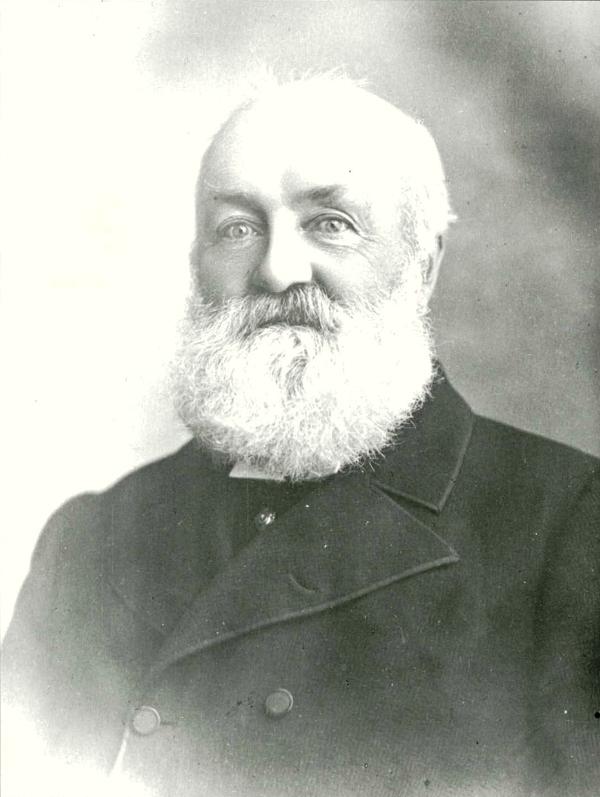
Mr. William Arnott - photo courtesy Arnott's http://www.arnotts.com.au/
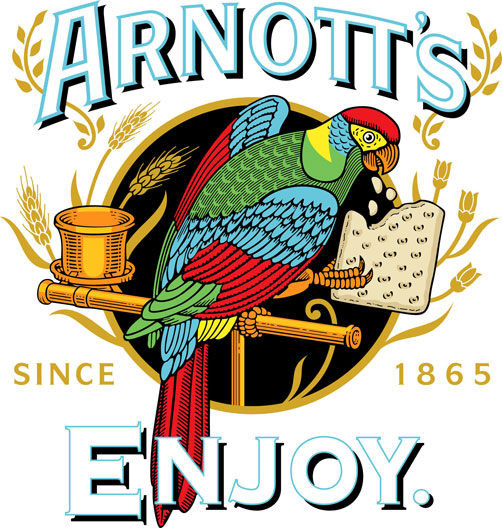
References and Extras:
One of William Arnott's pastimes as a member of the West Maitland Volunteer Rifle Brigade
During the year a number of rifle matches have taken place at Oakhampton the most important was the competition for the belt presented by W. H. Mullen Esq. and won by private William Arnott and the belt presented by Captain Wolle and won by bandsman Henry Stonehill. WEST MAITLAND VOLUNTEER RIFLES. (1865, May 4). The Maitland Mercury and Hunter River General Advertiser (NSW : 1843 - 1893), , p. 2. Retrieved fromhttp://nla.gov.au/nla.news-article18698214
MUSWELLBROOK HOSPITAL.
THE ANNUAL MEETING of Subscribers to the above Society will be held (D.V.) in the Court House, on THURSDAY, the 9th February instant, at Four p.m., to receive the report of the committee for the past year; to audit the aoooucts; to elect officers and committee ; and to transact such other business may be brought forward. J. S. ARNOTT, Secretary. Muswellbrook, 1st February, 1865. Advertising (1865, February 7).The Maitland Mercury and Hunter River General Advertiser (NSW : 1843 - 1893), , p. 1. Retrieved from http://nla.gov.au/nla.news-article18711023
East Maitland Volunteers and Rifle Matches
-The drill sergeant(Mr Housden) on Tuesday evening, drilled a small numbor of the East Maitland Company of Volunteer Rifles, Every effort will now be made to put the company in an efficient state -Subsequent to the drill, a few gentlemen desirous of giving a stimulus to the volunteer movement in this district, met at Mr Henry Dubber's hotel, and it was determined to get up a series of grand rifle matches, open to all volunteers in the Hunter River district. Upwards of thirty guineas were promised m the room, and it was resolved to get a requisition sent to the Mayor of West Maitland to call a public meeting on an early day for the further encouragement of this object. Mr William Arnott, winner of the Silver Champion Belt, presented by W. H. Mullen Esq , to the West Maitland Volunteer Rittes, signified his intention of presenting the belt (valued at 30 guineas) to be again competed for by the members of the company. THE FIRE IN YORK-STREET. (1865, July 27). The Maitland Mercury and Hunter River General Advertiser (NSW : 1843 - 1893), , p. 2. Retrieved from http://nla.gov.au/nla.news-article18707737
This is happening at the same time he is being pressed by creditors!
ARNOTT — WEBB. — May 5th, at the Wesleyan Church, Newcastle, by the Rev. W. G. Stephinson, assisted by the Rev. J. Hulme, Samuel Sinclair, second son of William Arnott, New-castle, to Sarah Godfrey, fifth daughter of Henry Webb, Newcastle. Family Notices (1884, June 3). Newcastle Morning Herald and Miners' Advocate (NSW : 1876 - 1954) , , p. 2. Retrieved from http://nla.gov.au/nla.news-article137285055
William's Mother and Father:
FUNERALS. THE Friends of Mr. WILLIAM ARNOTT are respectfully invited to attend the Funeral of his deceased Mother, ISABELLA ARNOTT: To move from his residence, "Leslie Villa," Melville-street, THIS (Wednesday) AFTERNIOON, at 3 o'clock, for Sandgate Cemetery. Family Notices (1888, September 26). Newcastle Morning Herald and Miners' Advocate (NSW : 1876 - 1954) , , p. 5. Retrieved from http://nla.gov.au/nla.news-article139049476
ARNOTT. — In loving memory of my dear mother, Isabella Arnott, who died September 14th, 1888. Two years in Heaven. Family Notices (1890, September 15). Newcastle Morning Herald and Miners' Advocate (NSW : 1876 - 1954) , , p. 4. Retrieved from http://nla.gov.au/nla.news-article132656798
DEATH. ARNOTT. — On the 8th instant, at his residence, Melville-street, DAVID MILLIE ARNOTT, aged 65 years, Father of Mr. William Arnott, of this city. Family Notices (1872, January 9). The Newcastle Chronicle (NSW : 1866 - 1876), , p. 2. Retrieved from http://nla.gov.au/nla.news-article111148293
FRIENDS of Mr. GEORGE A. ARNOTT are respectfully invited to attend the Funeral of his deceased beloved Brother, DAVID ARNOTT : To more from the residence of Mr. W. T. Lightfoot, 233 Hunter-street West, THIS (Thursday) AFTERNOON, at quarter to 3 o'clock, for Sandgate Cemetery. FRIENDS of Mr. WILLIAM BUSH are respectfully invited to attend the Funeral of his beloved Brother-in-law, DAVID ARNOTT : To move from the residence of Mr. W. T. Lightfoot, 233 Hunter-street West, THIS (Thursday) AFTERNOON, at quarter to 3 o'clock, for Sandgate Cemetery. Family Notices (1897, December 30). Newcastle Morning Herald and Miners' Advocate (NSW : 1876 - 1954) , , p. 3. Retrievedfrom http://nla.gov.au/nla.news-article13627889
His brother?:
FUNERALS. FRIENDS of Mr. DAVID ARNOTT, senior, Waratah, are respectfully invited to attend the Funeral of his deceased beloved son, DAVID : To leave the residence of Mr. W. T. Lightfoot, 233 Hunter-street West, Newcastle, THIS (Thursday) AFTERNOON at quarter to 3 for Wesleyan Cemetery, Sandgate. GILBERT BROS., Undertakers.
On the 24th of December, at her residence, High-street, West Maitland, Mrs. David Arnott, jun., of a daughter. Family Notices (1860, December 27).The Maitland Mercury and Hunter River General Advertiser (NSW : 1843 - 1893), , p. 1. Retrieved from http://nla.gov.au/nla.news-article18679427
DEATHS. Died, at Blane-street, Newcastle, on the 16th May, Margaret Arnott, aged 10 months; also, on the 4th June, Ann Arnott, aged 3 years,—of measles and whooping-cough,— the beloved daughters of David and Elizabeth Arnott. Family Notices (1867, June 8). The Maitland Mercury and Hunter River General Advertiser (NSW : 1843 - 1893), , p. 1. Retrieved from http://nla.gov.au/nla.news-article18724906
17.-David Millie Arnott, of Murrurundi, baker and confectioner. Liabilities, £271 2s 10d. Assets, £138 8s 10d. Deficiency, £132 14s. INSOLVENCY PROCEEDINGS. (1879, January 21). The Maitland Mercury and Hunter River General Advertiser (NSW : 1843 - 1893), , p. 4. Retrieved from http://nla.gov.au/nla.news-article18832082
Son
MR. LESLIE ARNOTT.
Death Announced.
Mr Leslie Arnott, governing-director for 40 years of William Arnott, Ltd., biscuit manufacturers, died at his residence, Wyuna Court, Wyuna-road, Point Piper, yesterday. [photo]
Mr Arnott was born at West Maitland in 1856. As a business man he showed great forceof character and initiative. He was keenly alert to every new innovation which could be applied to the biscuit industry and as a result of his trips to England, Europe, and America, he made many improvements, a number of which were in advance of overseas methods. He was ever restless to improve, perfect and expand the industry. His health began to fail a couple of years ago and he soon afterwards retired from active business.
Mr Arnott always took a keen interest in sport. In his younger days he was a prom-inent amateur boxer. He was president of the Newcastle City Bowling Club from 1913 to1929 and he represented New South Wales in interstate matches on several occasions. From1908 to 1924 he was patron of the Northern District Bowling Association. He was a member of the Commercial Travellers Club.
Mr Arnott is survived by Mrs Arnott, three sons (Messrs Herbert Leslie, Walter E., and Harold Arnott) and two daughters (Mrs C. Hollinshead and Mrs C. Barrett). His brothers are Messrs S. S. Arnott, W. Arnott, Colonel J. M. Arnott, Dr H. R. Arnott and Brigadier-General Arthur Arnott (Melbourne). There are four sisters—Mrs J. Terry, Mrs Mander- Jones, Mrs Stephenson, and Miss Monica Arnott
The funeral will leave the residence at half-past 11 o'clock this morning for the Crematorium, Rookwood. Out of respect to the late Mr Arnott the factory at Homebush will be closed today.
OUTSTANDING BUSINESS MAN
Mr C. M. McDonald, president of the Employers' Federation of New South Wales, and chairman of the Northern Collieries Association, said last night that Mr Arnott's death would be greatly deplored by all who had had the privilege of knowing him. He had shown himself an outstanding business man. During the whole of his business career he has striven to make the lot of his employees a happy one, and it could safely be said that he had achieved that object. His employees would greatly miss him. MR. LESLIE ARNOTT. (1931, February 26). The Sydney Morning Herald (NSW : 1842 - 1954), p. 13. Retrieved from http://nla.gov.au/nla.news-article16757362
ARNOTTS BISCUIT FACTORY.
There are few "native industries" better known in New South Wales than Arnott's Biscuit Factory. The business of Mr. Arnott is rapidly increasing, notwithstanding the fact that when a penny a-pound import specific duty was removed from biscuits, it was prophesied that the factory in question would be very materially crippled. So far from this being the case, in addition to other improvements being made to the manufactory at present a new engine is being fitted to the freezing-room, which is to be considerably enlarged to meet the constantly increasing requirements. The room now in use is capable of storing a hundred tons of butter-the new one, when completed, will be ample for double that amount
The factory of Mr. William Arnott is situated in Melville-street, Cook's Hill, Newcastle, and the premises cover an area of nearly two acres. The buildings are of brick, two storied, with galvanised roof, and appear to be in every way admirably adapted for the purpose for which they were designed. The machinery, in the shape of dough troughs, mixers, &c., is of the most approved pattern. It consists of six large mixing machines for biscuits, six egg-beating machines, six cooking machines, five fancy cooking machines, and 10 ovens, the latter of which burn something like 20 tons of coke a-week.
For the manufacture of the biscuits within the same time 25 tons of flour are used, together with 1800 dozen of eggs, 15 tons of sugar, and 42 cases of condensed milk, of the kind known as "Swiss," 3 tons of sultanas, between 3 and 4 tons of currants, and a very large amount of butter, the whole of which, as may be imagined, turning out a very large quantity of plain and fancy biscuits of various shapes, sizes, and consistency, but all coming under the one general head of "biscuits." The butter used is of the best, and comes from Wollongong, Sydney, New Zealand, and Melbourne the greater portion coming from this latter place, where it can be obtained cheaper, and, it is said, better for the purposes of biscuit-making, than elsewhere. It is bought in large quantities, according to the state of the market, and it is for this butter that the freezing-room is required as it is always kept a considerable time before being used, indeed, sometimes as long as 12 months.
For the packing of such rapid production there are constantly employed on the premises, in the manufacture of wooden cases, four carpenters, besides six tin men who daily "cut into" 15cwt of sheet tin to make canisters with; and this is said to be more than is "cut into" in the same time in all the other tin ware businesses in New South Wales combined. An engineer, expressly engaged in England for the purpose, also finds constant employment on the premises in making patterns for the biscuits. The men and boys are employed on the lower floor, in connection with the machinery, and the "making up" of what looks, to the unpractised eye, ordinary dough; while the girls and young women, of which there are some 50 employed in the factory, are busy as bees on the second floor, packing-in cans, and boxes, and cases, the goods as they are sent up from below, and half-a-dozen carters are constantly engaged carrying these to and fro to their various destinations, which is mainly the wharf, for exportation to Sydney, to our northern towns, and to Queensland-the people of which latter colony are very large consumers of Mr Arnott's palatable productions of all shapes, sizes, and quality, from the sponge-like butter-nut to the flat plain biscuit, pure and simple. In the manufacture of these there are altogether employed close upon 250 hands, whose daily hours of labour are eight, and who, like most other artisans, have the benefit of a Saturday half-holiday.
An abundant supply of water is laid on to the premises from the waterworks, and there is also a large amount of rainwater kept stored in tanks beneath the building, and this is considered preferable to the river water for the purpose of biscuit-making. The amount paid away by the manufacturer for wages and for the various ingredients used in the biscuits is not less than £7000 a-month, during which time there is paid in freight age alone £125. In conclusion, it might be remarked that Mr Arnott, when questioned on the subject of the specific duties which protectionists claim ought to be placed on imported biscuits, very strongly objected to the proposals of many of them, instancing the fact that if the duty were increased to any appreciable extent, there would be an influx of manufacturers in the same line from the home country, the very first effect of which would be to immediately cause a reduction of the wages now paid by Mr Arnott to his hands. ARNOTTS BISCUIT FACTORY. (1887, August 25). The Sydney Morning Herald (NSW : 1842 - 1954), p. 3. Retrieved from http://nla.gov.au/nla.news-article13662062
610. James Haydon Leslie Arnott, Newcastle, N.S.W.— An improved biscuit. 12th April. Patents. Government Gazette Notices (1888, May 4).New South Wales Government Gazette (Sydney, NSW : 1832 - 1900), , p. 3157. Retrieved from http://nla.gov.au/nla.news-article222760637
10.523. 26th August, 1905, William Arnott(Limited), of Newcastle, New South Wales, biscuit manufacturers—The word " MAB," to be applied to biscuits and cakes, under Class 42. TRADE MARKS. (1905, August 29).Government Gazette of the State of New South Wales (Sydney, NSW : 1901 - 2001), , p. 5855. Retrieved from http://nla.gov.au/nla.news-article221027835
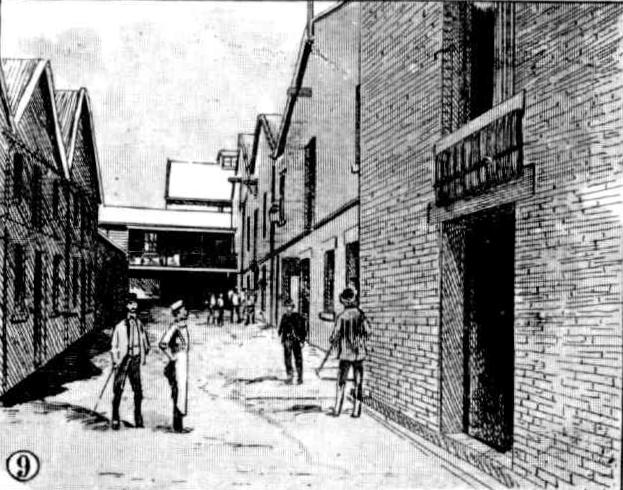 whilst the largest biscuit factory in the colony, that of Mr. W. Arnott, is almost in the city. Newcastle. Arnott's biscuit factory (a side view of which is given in illustration No. 9) is now considered one of the sights of Newcastle; Who has not heard of Arnott's biscuits ? They are a household word in New South Wales.
whilst the largest biscuit factory in the colony, that of Mr. W. Arnott, is almost in the city. Newcastle. Arnott's biscuit factory (a side view of which is given in illustration No. 9) is now considered one of the sights of Newcastle; Who has not heard of Arnott's biscuits ? They are a household word in New South Wales.
The works cover a very large area of ground, extending from Melville-street on the one side to Corlette-street on the other. On entering the works from the Melville-street entrance the visitor at once sees the machinery in full operation; he goes from department to department, and observes hundreds of men and boys busily engaged at the various machines in making the great variety of biscuits necessary to satisfy the wants of the public. It is noticed that in several departments they are engaged making one kind of biscuit only, this is thecelebrated milk arrowroot, of which the firm turns out about 16 tons per week ; a visit is then made to the mixing room, where it is noticed .that, owing to the excellence of the machinery, the hands never come into contact with the dough, and everything is scrupulously clean. After .going through, the mixing rooms, the visitor: passes to the fancy department.- .
Here he sees the rich macaroon, or the dainty ladies' finger biscuit, being made, besides other kinds too numerous to mention. The visitor next passes on to the freezing rooms, where the butter is stored. A very large freezing machine is used, and on the hottest day in summer the visitor can always walk into a temperature of 31 or 32 deg. This temperature is necessary to keep the butter firm and good. The firm do a very large business in this department, and buy some 200 tons per year, and store it in the cool rooms to keep it sweet and fresh. A visit is then paid to the carpentering works. All the cases are made on the premises, and a staff of carpenters are kept all the year round. The tinsmith shop comes next, six tinsmiths are constantly engaged making the tins necessary for the packing of the biscuits. In the packing departments, which are situated on the second storey, from 90 to 100 girls are constantly employed, the number of hands employed altogether amounting to about 350. The works are under the sole management of Mr. Leslie Arnott. (1891, April 11). Australian Town and Country Journal (Sydney, NSW : 1870 - 1907), , p. 26. Retrieved from http://nla.gov.au/nla.news-article71251390
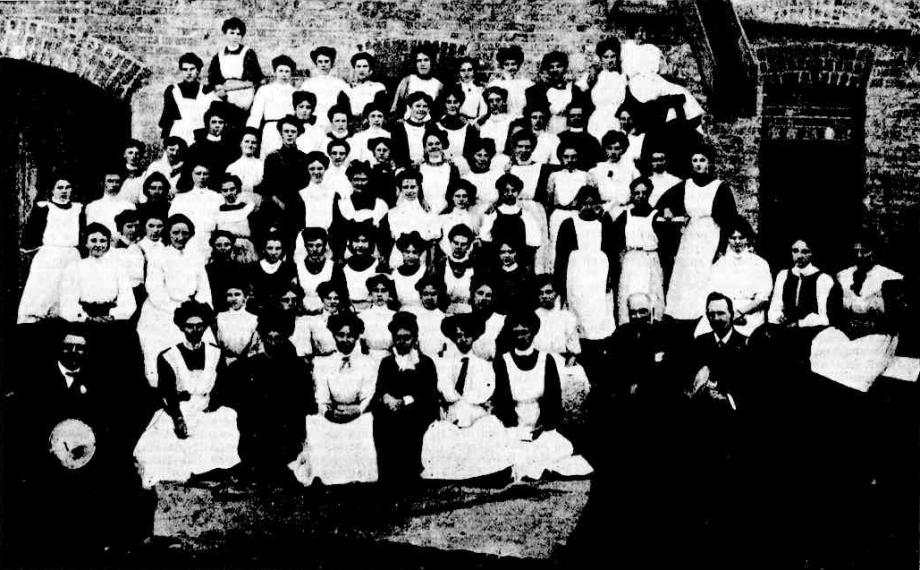
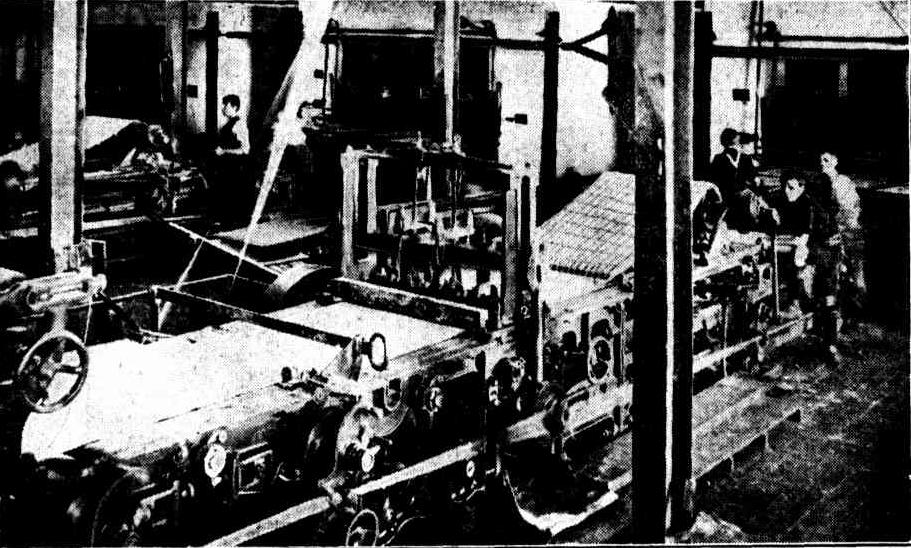
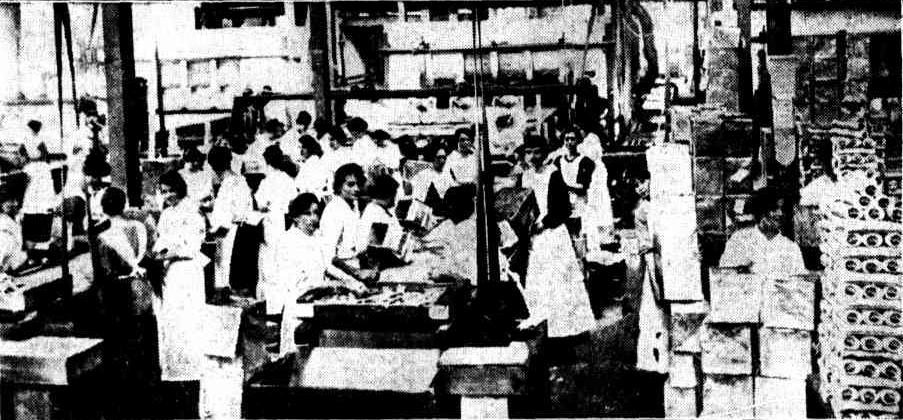
.jpg?timestamp=1463703010054) Louis-Gabriel Suchet, Duc d'Albuféra (2 March 1770 – 3 January 1826)
Louis-Gabriel Suchet, Duc d'Albuféra (2 March 1770 – 3 January 1826)
He was the son of a silk manufacturer at Lyon, where he was born, originally intended to follow his father's business; but having in 1792 served as volunteer in the cavalry of the national guard at Lyon, he manifested military abilities which secured his rapid promotion. As chef de bataillon he was present at the Siege of Toulon in 1793, where he took General O'Hara prisoner.
In the campaigns of 1805 and 1806 he greatly enhanced his reputation at the Battles of Austerlitz, Saalfeld, Jena, Pułtusk and Ostrolenka, where he commanded an infantry division. He obtained the title of count on 19 March 1808, married on 16 November of the same year Mlle. Honorine Anthoine de Saint-Joseph (Marseille, 26 February 1790 – Paris, 13 April 1884), a niece of Julie Clary, the wife of Joseph Bonaparte, by whom he had issue, and soon afterwards was ordered to Spain. Here, after taking part in the Siege of Saragossa, he was named commander of the army of Aragon and governor of that region. Within two years he brought the area into complete submission by wise and adroit administration no less than by his brilliant valour.
Beaten by the Spanish at the Battle of Alcañiz, he sprung back and soundly defeated the army of Joaquín Blake y Joyes at the Battle of María on 14 June 1809, and on 22 April 1810 defeated Henry Joseph O'Donnell, Count of La Bisbal at Lleida.
He was made Marshal of France (8 July 1811) after the siege of Tarragona. In 1812 he captured Valencia, for which he was rewarded with the dukedom of Albufera near Valencia on 24 January 1812.[2] When the tide turned against France, Suchet defended his conquests one by one until compelled to withdraw from Spain, after which he took part in Soult's defensive campaign of 1814.
The restored Bourbon king Louis XVIII made him a peer of France on 4 June, with a seat in the upper house, but, having commanded one of Napoleon's armies on the Alpine frontier during the Hundred Days, he was deprived of his peerage on 24 July 1815.
He died in the Castle of Saint-Joseph near Marseille on 3 January 1826. The chicken dish poularde à la d'Albuféra is named after him. Louis-Gabriel Suchet. (2016, March 18). In Wikipedia, The Free Encyclopedia. Retrieved from https://en.wikipedia.org/w/index.php?title=Louis-Gabriel_Suchet&oldid=710721023
Australia 1890-1900
The Great Boom could not last forever, and in 1891 it gave way to the Great Crash, a decade-long depression which created high unemployment, and ruined many businesses, and the employers responded by driving down wages. The unions responded with a series of strikes, particularly the bitter and prolonged 1890 Australian Maritime Dispute and the 1891 and 1894 shearers' strikes. The colonial ministries, made up for the most part of liberals whom the unions had long seen as allies, turned sharply against the workers and there were a series of bloody confrontations, particularly in the pastoral areas of Queensland. The unions reacted to these defeats and what they saw as betrayals by liberal politicians by forming their own political parties within their respective colonies, the forerunners of the Australian Labor Party. These parties achieved rapid success: in 1899 Queensland saw the world's first Labor Party parliamentary government, the Dawson Government, which held office for six days.
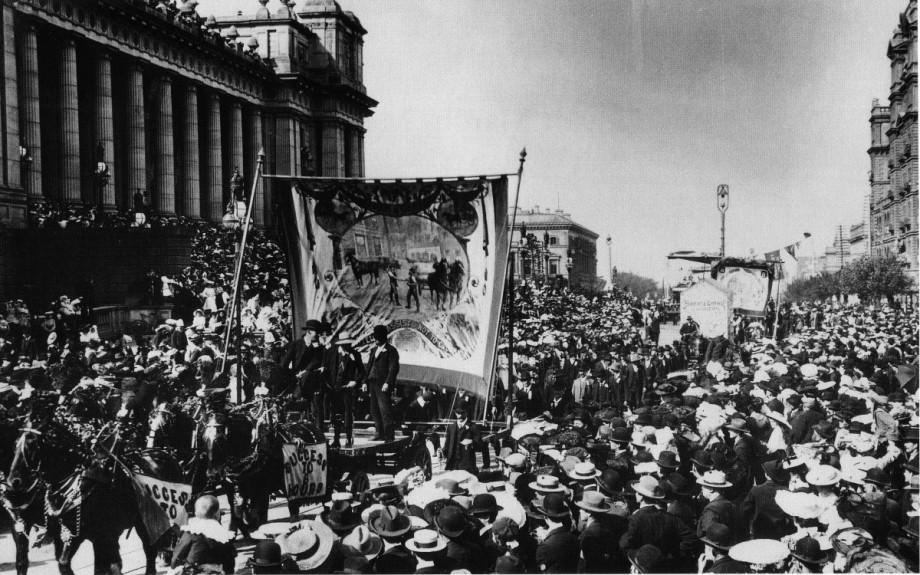
Eight-hour day march circa 1900, outside Parliament House in Spring Street, Melbourne.
The industrial struggles of the 1890s produced a new strain of Australian radicalism and nationalism, exemplified in the Sydney-based magazine The Bulletin, under its legendary editor J F Archibald. Writers such as A B "Banjo" Paterson, Henry Lawson and (a little later) Vance and Nettie Palmer and Mary Gilmour promoted socialism, republicanism and Australian independence. This newfound Australian consciousness also gave birth to a profound racism, against Chinese, Japanese and Indian immigrants. Attitudes towards indigenous Australians during the period varied from the outright armed hostility seen in earlier times to a paternalistic "smoothing the pillow" policy, designed to "civilise" the last remnants of what was considered a dying race.
History of Australia (1851–1900). (2016, May 12). In Wikipedia, The Free Encyclopedia. Retrieved from https://en.wikipedia.org/w/index.php?title=History_of_Australia_(1851%E2%80%931900)&oldid=719978122
DR. MILFORD'S NEW YACHT.
The yacht Sao, so called after the eldest daughter of Doris, and mother of the Nereida, was designed in 1880 by Mr. Dixon Kemp, one of the first, if not the first, naval architect of Great Britain. She is designed both for cruising and speed, and may be considered as a good all round boat, both in light and heavy weather. She was recently launched from the building yard of Mr. W. Ford, Berry's Bay, North Shore, and has been built entirely of colonial woods, with the exception of her hatches, which are made of teak, and her spars of American spruce rikker. She has six and a half tons of lead for ballast, six tons of which are bolted on the keel by bolts and floors of bronze, which weigh altogether nearly 11cwt. She is 32ft 3iin long between perpendiculars, and 6ft 7 l-16in extreme breadth, and thus, according to the Royal Sydney Yacht Squadron and Prince Alfred Yacht Club measurements, she is 5 91-94 of a ton, or practically a six-tonner. She is out away a good deal at the bow, and her keel is considerably rockered, resembling in this respect the old Australian. Here extreme depth is 6ft, and she has a freeboard of 24in; her Gunwale is Gin high ; her planks and deck are made of Kauri pine, the wood so much admired by “Bobstay" when he visited Australia with the Flying -Squadron. The length of her spars are-Mast, from deck to hounds, 25ft ; ; topmast, fish to shoulder, 25ft ; bowsprit, outboard, 15ft ; racing main boom, 30ft ; racing gaff, 21ft ; spinnaker boom, 35ft ; topsail yard, 26ft. Her racing sails have all been made by Lapthorne, whose reputation as a first-class maker will, if possible, be increased by the fit and make of the Sao. Her racing sails consist of mainsail, foresail, balloon foresail, first, second, and third, and storm-jib square-headed and jib-headed topsail, jib topsail, trysail, running spinnaker, and bowsprit spinnaker.

Sao sailing in the 1888 Balmain Regatta by Henry King, courtesy Powerhouse Museum Tyrell Collection.
The area of her mainsail is G85 square feet, of her foresail 138 square feet, and jib 188 square feet, total area of her racing working sails being 1011 square feet. George Cannis is making her pleasure sails, which are also all that could be desired. She is covered below the water line with the best cold-rolled manufactured copper, especially imported from England, while the rigging and gear were especially made for her by Payne, of Southampton. The quality of the blocks are of such a character that they alone will well repay the time devoted to a visit to the little craft. Dr. Milford, her owner, has spared neither time, trouble, nor expense in thus procuring an excellent specimen of the modern six-ton yacht. We wish the yacht and her worthy owner every success. DR. MILFORD'S NEW YACHT. (1884, January 26). Australian Town and Country Journal (Sydney, NSW : 1870 - 1907), , p. 24. Retrieved from http://nla.gov.au/nla.news-article71007846
Ships Biscuits - the At Sea Necessity that Floated William Arnott’s Success- collected and collated by A J Guesdon, 2016